10 Days in Spain: A Perfect Itinerary for First Timers
If you’ve spent any time at all in this corner of the internet, you’ll know that we absolutely love Spain for a number of reasons – the diverse landscapes, the food culture (and the great gluten free food scene!), the weather, the regional identities, the rich history, to name a few.
After a recent trip to Spain – specifically the leg in Madrid – Spain has become a clear number two in terms of our favorite European countries to visit (after Italy, which has our hearts now and forever).
Similar to Italy, which is a surprisingly diverse country from a regional perspective, one of the things we like about Spain is that each region has its own unique flair and heritage.
So as you’re traveling from place to place, there’s something new and interesting (and delicious new foods!) waiting for you in the next city despite the fact that you’ve only gone a few hours on the train.
In this guide, we’re going to give you our version of the best way to spend 10 days in Spain for the first time all based on our own experiences on our multiple recent trips to Spain that have cemented it as our second favorite European country to visit (after Italy, mi amore).
In the detailed guide below, here’s what we’re going to cover:
- Exactly how to plan out your 10 day trip, including what stops to make, what route to take, and all the important logistics you need to know
- A guide to what to do, where to stay, and how to get there for each stop on the itinerary
- Options for shorter and longer trips if you have more or less time in Spain
Throughout the guide, we’ll share our favorite finds and experiences in Spain based on our multiple trips (including five weeks in Spain a couple of years ago, and a more recent trip) to help you plan your unforgettable trip.
Sound good to you? Let’s get into it.
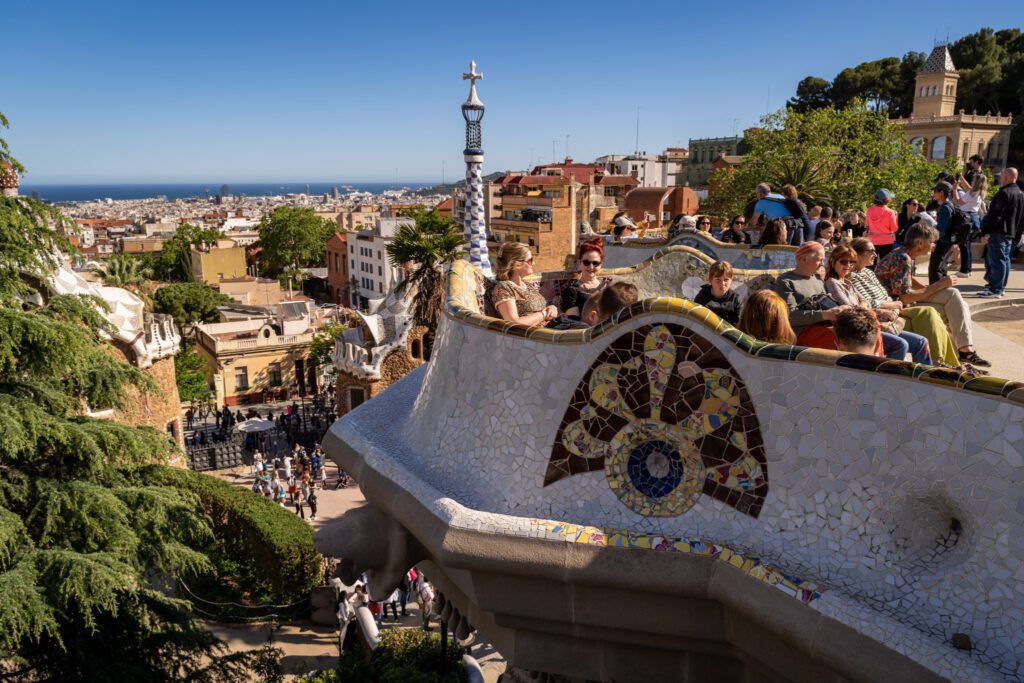
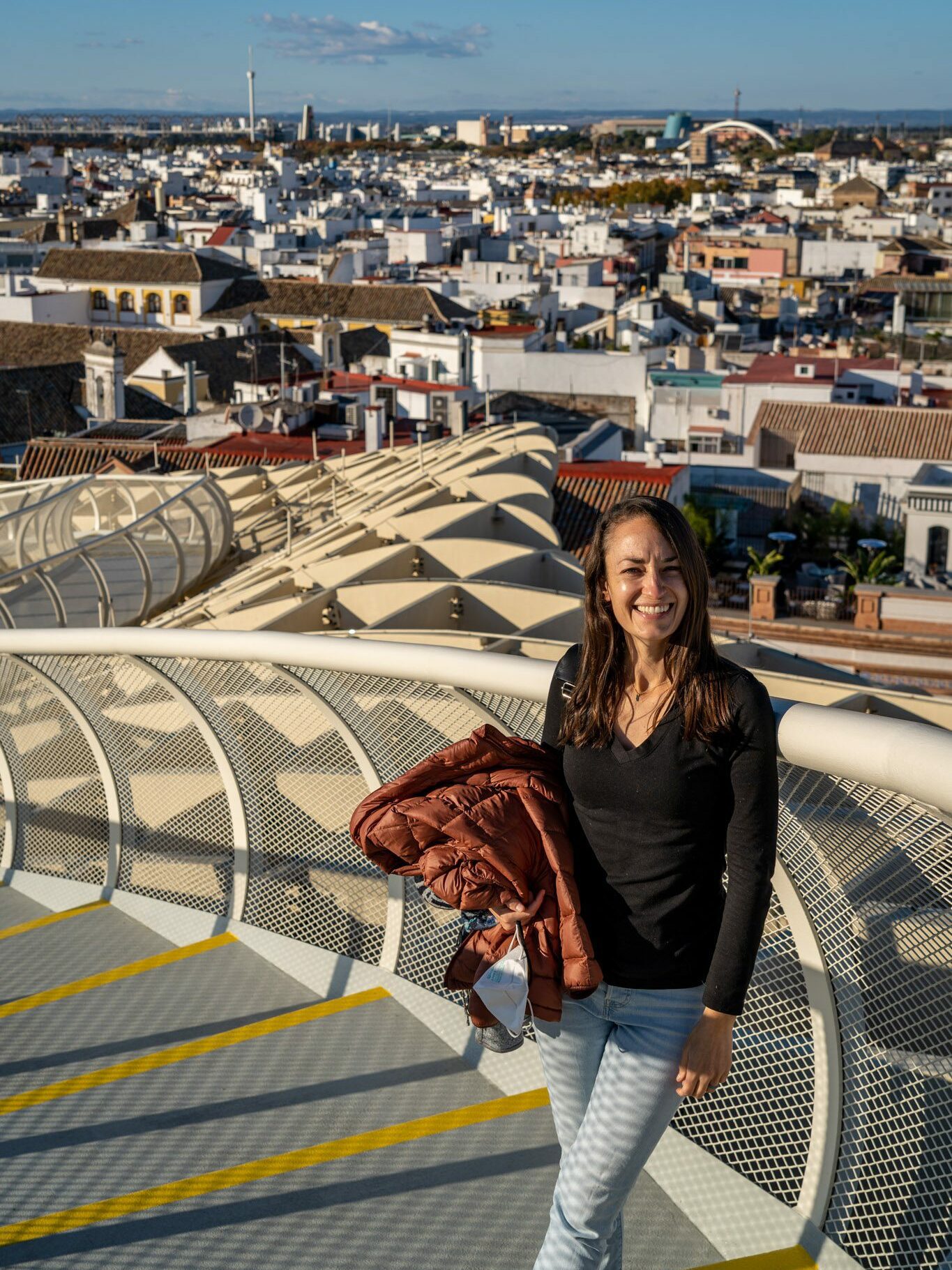
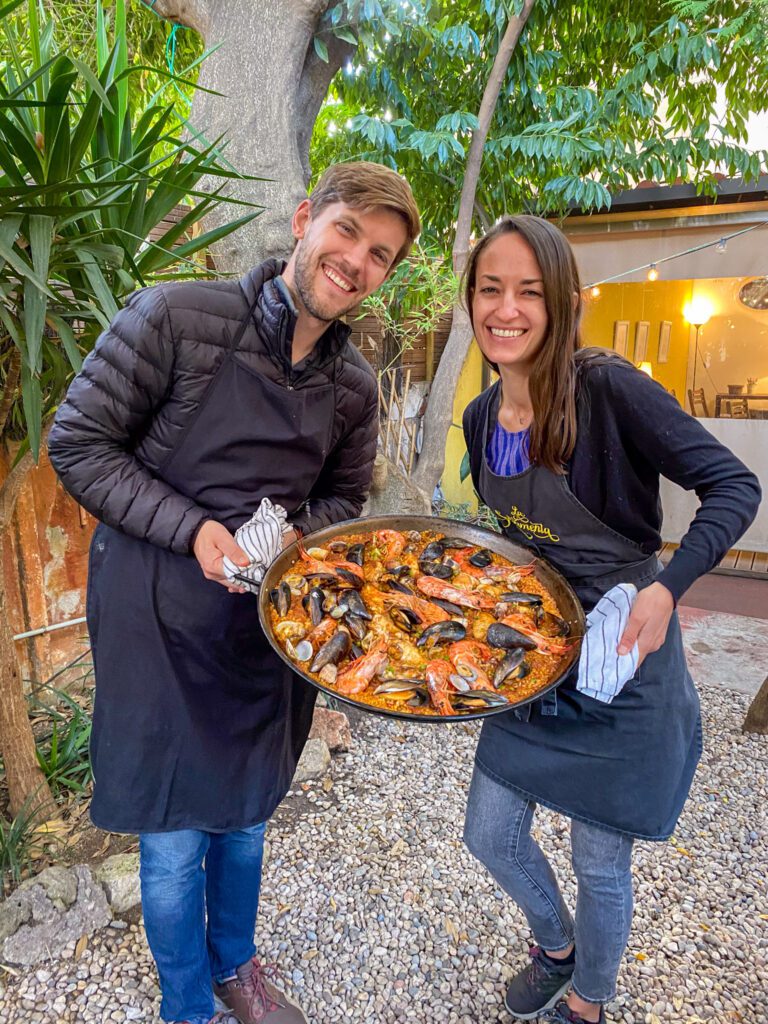
Disclaimer: Some of the links in this post, like hotel links, are affiliate links, meaning at no additional cost to you, we make a little bit of money if you click through and book. That being said, we would never recommend something to you that we don’t stand behind 100%.
What Can You See with 10 Days?
The first thing we should do here is set expectations for what you’re going to find in this itinerary, because it is very much NOT a “one city per day to cram it all in” situation.
Generally speaking, we highly recommend spending no less than two or three days in a city at the very least.
Mostly because packing your bag and moving every day or two is exhausting, and is not a particularly pleasant way to travel (especially with check in and check out times, which can mean you’re losing precious time on your trip just waiting around).
One of the challenges we ran into when putting together our 7 day itinerary for Spain was the fact that we really didn’t think a week was enough time to do Sevilla, Barcelona, and Madrid.
Plus, we couldn’t decide which city would be best to pair with Madrid (we ended up going the Sevilla + Granada route, because we love Andalucía).
With a full 10 days (that means flying in on day 0, and flying out on day 11), we do think you have enough time to do all three, and that’s exactly what we’d do.
Though, of course, Spain is a big country, so there will be PLENTY to see on your second trip (and third, and fourth).
Each of those three major cities also has at least one excellent day trip destination that you can take advantage of, which will allow you to get the benefits of seeing other parts of Spain without the hassle of packing up and moving around every day.
The one thing you’re going to miss, unfortunately, is a trip to Granada, which is one of our favorite places in Spain.
Home to the magnificent Alhambra and the last gasps of the Caliphate that shaped so much of southern Spain’s history and culture, it’s just not convenient to reach along this route, and going to Granada means short-changing another city OR missing one of the day trips, which are honestly going to be one of the highlights of your trip.
If you have an extra two days or so, it would be the first thing we’d add.
Where to Start and End Your Itinerary
Following the itinerary we’re about to cover, you’ll notice that we’re forming a nice, relatively straight line from Sevilla at the southwestern edge of Spain up to Barcelona at the northeastern corner of Spain.
Madrid sits roughly in between them, smack dab in the center of the country.
This means that the best way to organize your itinerary is to start your trip in Sevilla and end in Barcelona (or vice versa) with a stop in Madrid in the middle to avoid needless backtracking.
The best way to accomplish this is to book an open-jaw flight – a flight that arrives in one city and departs from another – that arrives in Sevilla and departs from Barcelona.
If you choose to fly in and out of a single city, it will add roughly a half day of extra travel (that will limit your time spent exploring).
Note that we’re organizing the itinerary below so that you start in Sevilla and end in Barcelona, but you could just as easily flip the order of cities AS LONG AS you keep Madrid in the middle.
Getting Around Spain
In a word, trains! All of the main cities on this itinerary are well-connected by Spain’s high speed rail network, which is by far our favorite way to travel when we’re in Spain (or other European countries).
There are a couple of reasons why taking the train is the best option, we think.
First, assuming you’re taking a high speed train, by the time you add up all the extra time you have to spend at the airport (and getting there – more on that in a second) the train journey is going to take roughly the same amount of time as the flight.
Second, the train stations for these cities are generally in the city center, which means it’s a quick and easy journey from train station to hotel.
On the other hand, the airports are generally 30-60 minutes outside the city center, which eats up precious time on your trip (and relates to the first point about trains being more efficient).
Third, trains are SO MUCH more pleasant than airplanes. You get to see the landscapes as you’re traveling, you’re not locked in a metal tube in the sky, and you generally get more leg room and baggage storage on a train.
Traveling by train is efficient, convenient, plentiful, and relatively affordable, and is absolutely how you should plan on getting between cities.
There are two options we’ve used and would recommend for booking trains in Spain.
The first is going directly through Renfe, the agency that operates trains in Spain. This is what we generally do, but there are definitely some quirks.
You have to know the station’s name in Spanish (not a big deal at all), and more importantly, it sometimes decides to randomly decline our credit cards, which is how we found out about the second option when we were trying to buy train tickets but constantly getting kicked out of the system.
The second option is Omio. Omio is a third party platform (with a functional app) where you’ll get an excellent user interface that is in English and makes it very easy to navigate the process.
The downside of Omio is twofold.
One, you’re going to pay a small service fee, which makes the price of the tickets marginally more expensive.
Two, you’re going to sacrifice flexibility because going through a third party generally means you can’t cancel and get a refund, though you can select a ticket that allows changes.
We’ve used Omio in both Spain and Portugal, and we’ve never had an issue.
An Amazing 10 Day Spain Itinerary for First Timers
And now, let’s get into the itinerary.
Here’s what the itinerary you’re going to find below looks like written out.
- Day 1: Sevilla
- Day 2: Sevilla
- Day 3: Day Trip to Córdoba (stay in Sevilla)
- Day 4: Train to Madrid
- Day 5: Madrid
- Day 6: Day Trip to Toledo (stay in Madrid)
- Day 7: Train to Barcelona
- Day 8: Barcelona
- Day 9: Barcelona
- Day 10: Day Trip (choose your own adventure + stay in Barcelona)
Obviously, you’ll have to massage this itinerary a little bit to make it work with your specific flights.
We’re assuming you have ten full days in Spain, not including the half days that would be dedicated to your arriving and departing flights.
Note that this is very much a classic itinerary that is meant to help you to get a taste of some of the diversity that exists within Spain and figure out the best way to see the main highlights in ten days (according to, well, us, who have spent a lot of time in Spain over the past several years – more than six weeks in total!).
Obviously, there is a LOT to see in Spain, and we have plenty of ideas on how to make changes to this itinerary.
For example, you could do a southern Spain itinerary that focuses more on Andalucía, hitting Ronda and Granada in addition to Sevilla and Córdoba.
Or you could focus on northern Spain, starting in Barcelona and making your way up to Basque country (which we haven’t done yet, but is on our list!).
It all depends on what you’re looking for.
You’ll find some of our ideas in the “with more time” section below, which you can use to make changes to your itinerary based on your specific style and needs.
Days 1-3: Sevilla + Córdoba
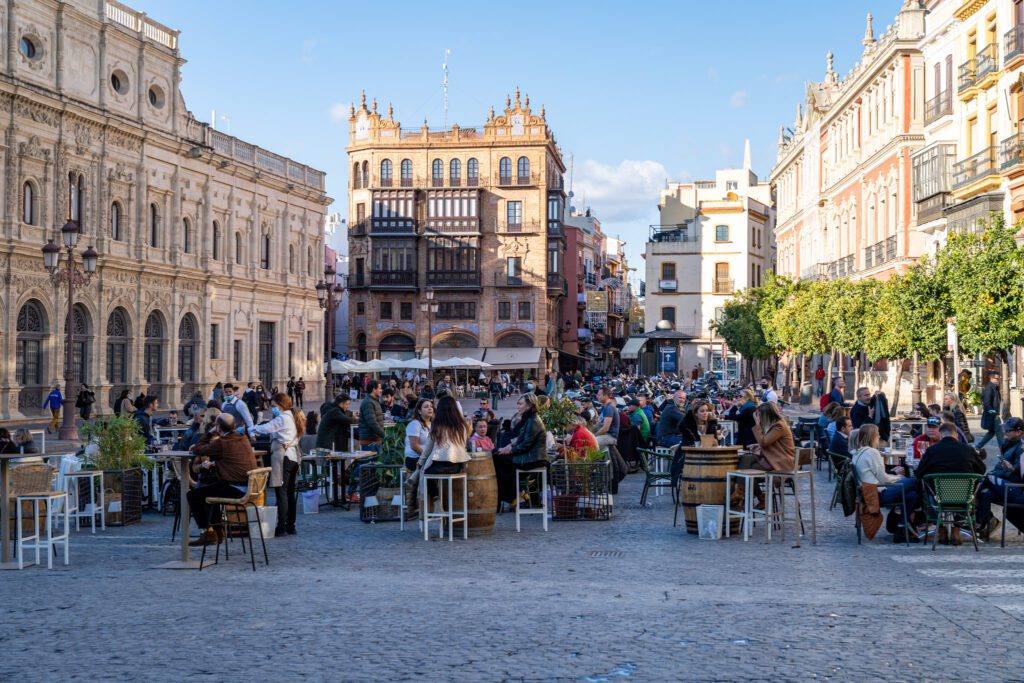
Starting your trip in Sevilla will give you an important historical and cultural foundation for the rest of your time in Spain.
Sevilla’s history begins long before the Romans, but that’s where we’re going to start this fast-paced meander through history.
Sevilla was an important city in Roman times, and if you don’t believe me, emperors Hadrian and Trajan were actually born in nearby Italica.
Julius Caesar himself was responsible for the construction of the original city walls of Sevilla, which are long gone as the city expanded well past the original Roman city’s boundaries.
Next came the Visigoths and Vandals, who were in Sevilla for a few hundred years, before the most consequential period in Sevilla’s history began in the 8th Century.
That, my friends, is when the Umayyad Caliphate arrived, which kicked off a period of Muslim rule on the Iberian Peninsula that lasted for almost eight centuries in total, though Sevilla was reconquered by the Spanish Christians in 1248.
There’s a reason why I think it’s important to know Sevilla’s history going into your trip. The entire time you’re in Sevilla, you’re going to be seeing the impact of the mixture of the different cultures on modern-day Sevilla.
The main sights – the Alcázar (whose name itself is a good example of the mixing of cultures) and the Sevilla Cathedral have elements from both the Islamic period and various Christian periods that came afterwards.
In fact, the majority of both buildings are expansions that were built around structures that were built during the period of the Caliphate.
That aspect of Spanish history is certainly something we did not learn about in school, at least in the US, where Spanish history was essentially flattened to “they sent Columbus and had a lot of colonies in the Americas.”
In many ways, all of the stereotypes you have about Spain – that they eat dinner at 11pm, that they take a siesta in the middle of the afternoon, that they eat charcuterie and churros for every meal (though, crucially, they do NOT drink sangria – try vermouth or vino de naranja or sherry instead) – are all somewhat true in other parts of Spain, but it does feel like the dial is turned up to 11 in Sevilla.
Which will serve as a good introduction (trial by fire, if you will) for your time in Spain, because the dial will consistently get turned down as you move northeast through the country.
In addition to all that history and culture, Sevilla is just a really pleasant place to be.
Like many cities in Europe, it’s on a river, and the weather is sunny and warm nearly year round (though we have been there in November, and it was literally freezing…but sunny!).
Walking through the streets of Sevilla, you’ll notice the orange trees lining the streets.
However, it’s worth noting that these oranges are not super pleasant to eat – they’re very bitter – and Spaniards aren’t huge fans of them (they’re exported to the U.K. as bitter orange marmalade though).
What to Do in Sevilla
Here are some of our favorite things to do in Sevilla in no particular order.
The Royal Alcázar of Sevilla
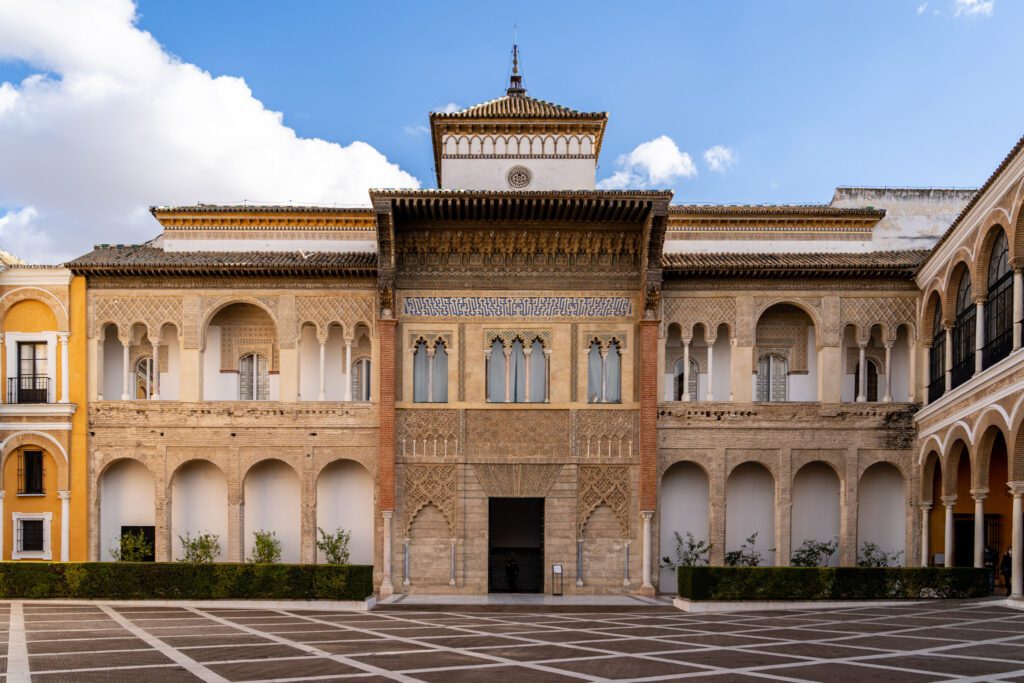
Our favorite attraction in Sevilla, the Royal Alcázar was originally built as a fort or castle (a military installation of some kind), and was repurposed as a royal palace following the Reconquista.
That history is important, because many elements of the structure today go back to that period – notably the walls enclosing the grounds so that you can’t see anything from the outside and the lush gardens that exist on the other side, unbeknownst to onlookers walking the streets along the walls.
The conversion to a palace included a remodel of the Gothic palace that was built here by the original Spanish occupants to bring the Mudéjar style to the palace because it was en vogue at the time.
We assumed that, similar to the Alhambra, the design was a relic of the history of the Islamic Caliphate’s period of rule, but that’s not true (most of that structure no longer exists) – it’s just that the style was popular among elites in Spain at the time, a couple of hundred years after the end of the Reconquista.
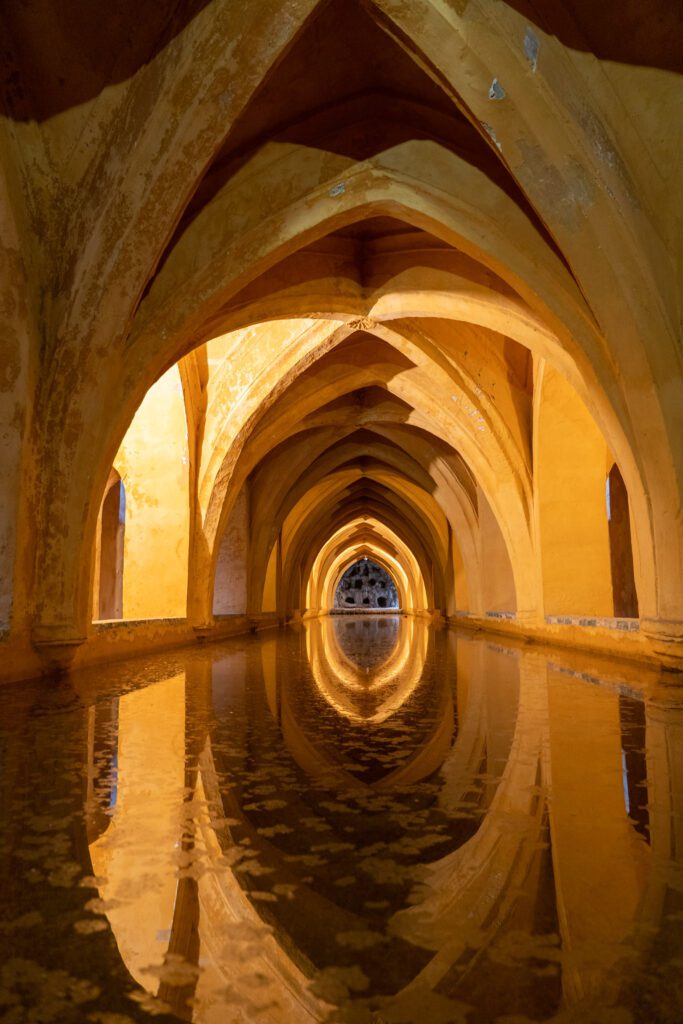
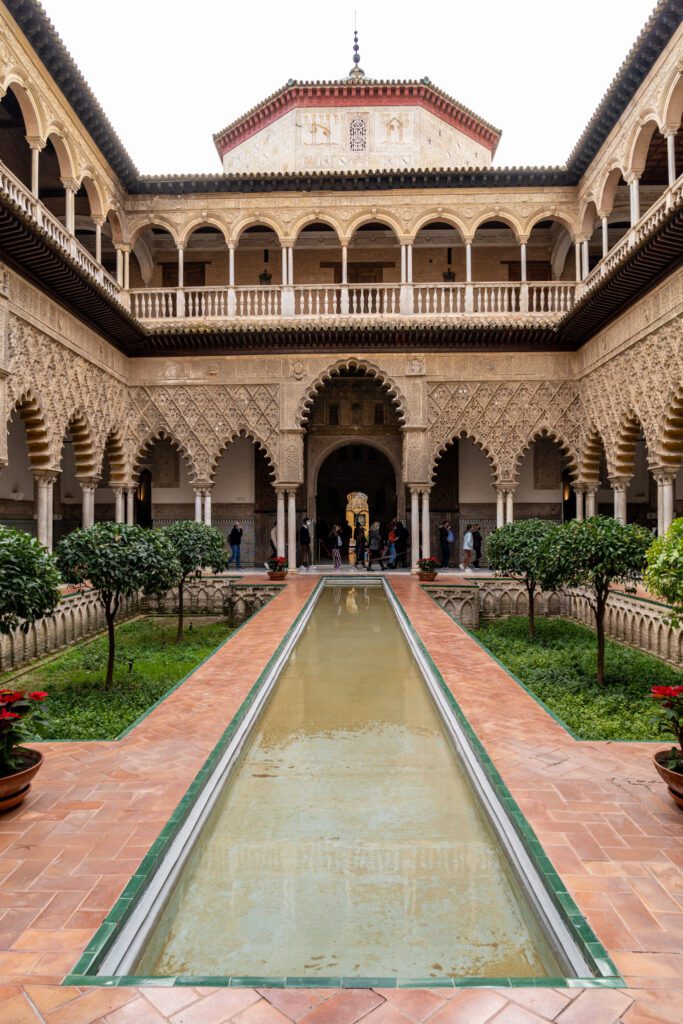
If you’re going to do one tour in Sevilla, we’d make it Jose’s Royal Alcázar tour, which we did and loved on our first day in Sevilla.
It set us up for a deeper understanding of the city and its history and culture over the course of the rest of the trip.
If a tour isn’t in the cards (or budget), you’ll need to purchase tickets ahead of time here.
The Catedral de Sevilla
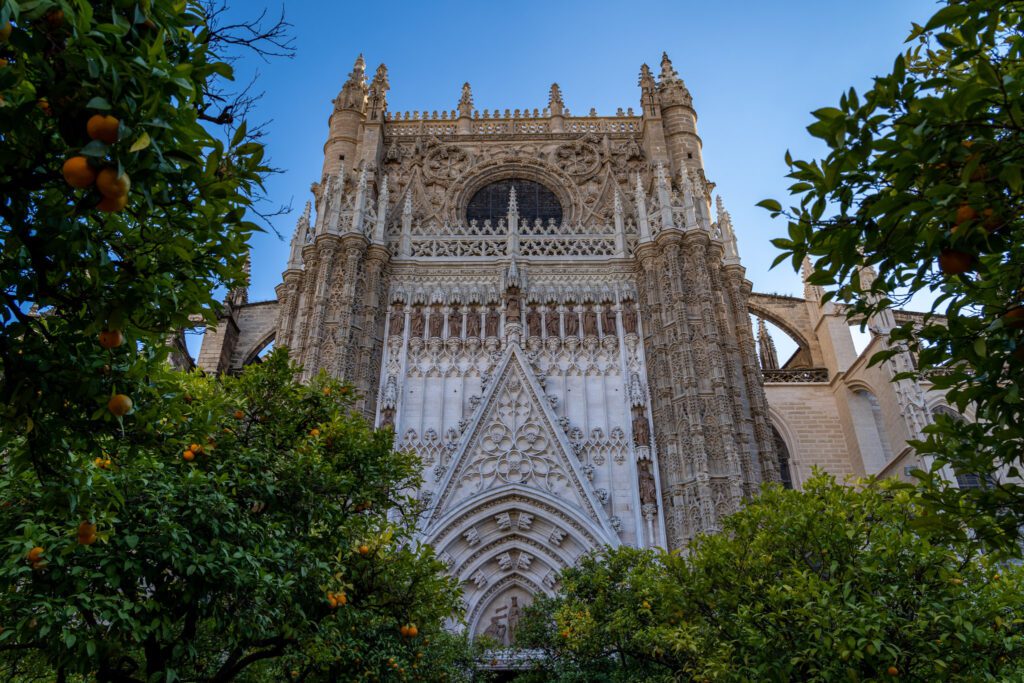
Like many religious buildings in southern Spain (and, really, across Europe), the Catedral de Sevilla was built on the site of a former mosque.
Take a look at the belltower and you’ll see it – it was originally the minaret where the call to prayer came from, and it only became a bell tower after the Reconquista (which happened for Sevilla in the 13th Century).
It’s actually one of the largest Gothic Churches in the world (and was the largest when it was completed in the 16th Century), which was surprising to us.
Aside from walking around and admiring the grandeur, there are a couple of things you should probably see while you’re here.
First, climb the bell tower for excellent views out over Sevilla. Instead of narrow, claustrophobic steps, it’s actually a ramp from the floor to the top, which was interesting to us.
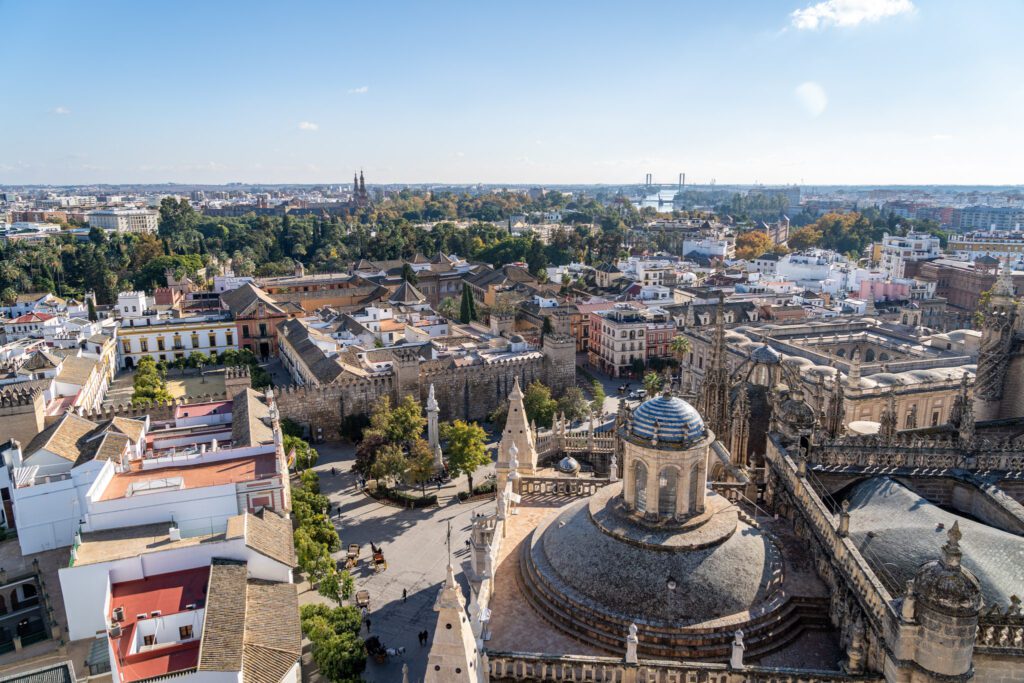
Second, see Christopher Columbus’ tomb, which only contains a piece of Columbus’ body, but historians aren’t quite sure which part or how much (part of his body remained in the Caribbean, where he died).
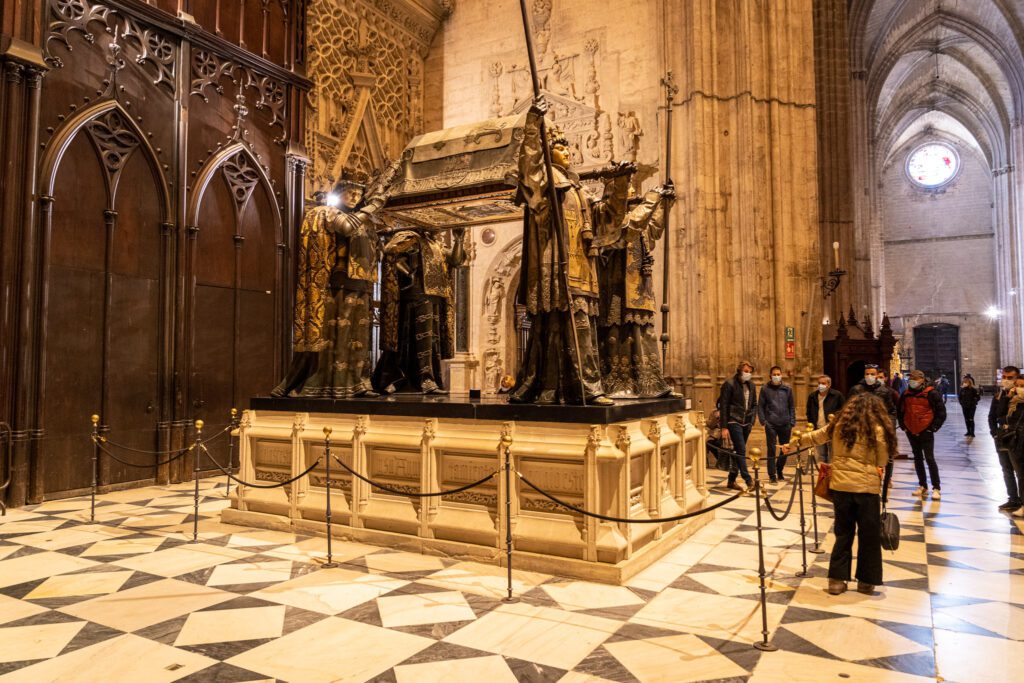
The reason we think you should check out his tomb is not because we think he’s some hero for “discovering” America, it’s because it will make you consider whether a man who undoubtedly led a genocide of Indigenous peoples in the Americas deserves this huge, opulent tomb.
He did make the Spanish crown quite a bit of money, though, which is probably why someone from Genoa – which is in Italy – is so eagerly claimed as Spanish.
Having just been to London, this moral quandary reminds me a lot of the British Museum, which is cool to see, but doesn’t feel…great.
As Americans, we have a narrative about Columbus as this fearless explorer who led to America being founded (and it’s pretty clear to us that Spanish people view him as a bit of a hero too after multiple conversations about it).
But the truth is always a little more complicated than that, and seeing his tomb live and in person will (hopefully) make you think a little harder about that.
Plaza de España
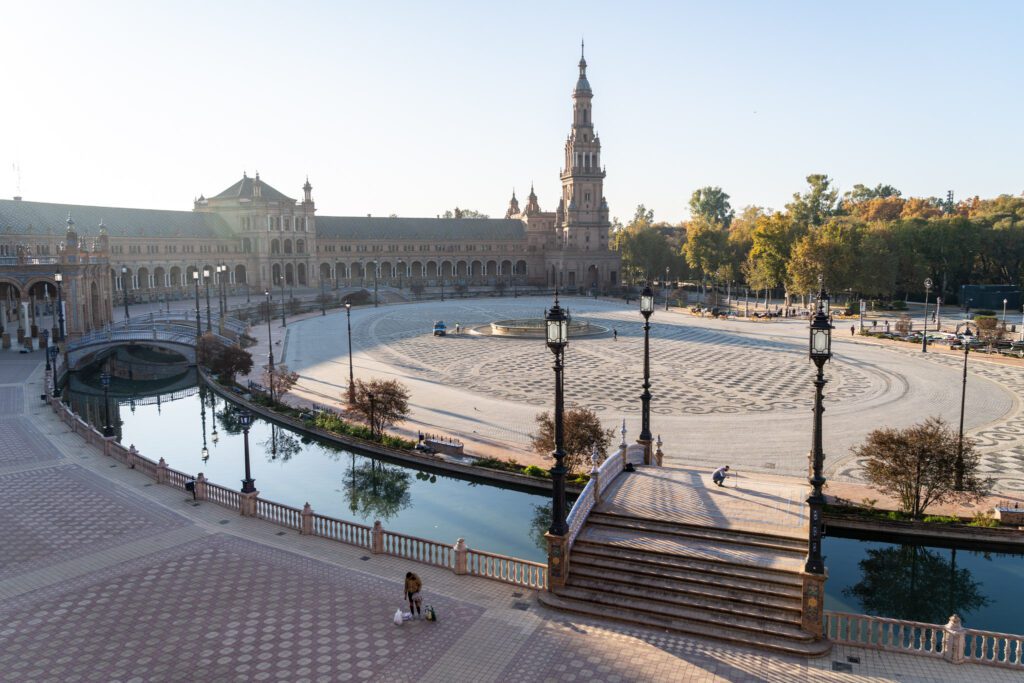
If you’re a Star Wars nerd, you might recognize this ornate plaza from the movie that was once regarded as the worst Star Wars Movie, Attack of the Clones (thanks, Rise of Skywalker, for dethroning my childhood favorite movie!), where it served as the set for parts of Naboo.
The story behind this plaza, which is pretty clearly meant to project wealth and power, is pretty funny (I think).
It was built to host the Ibero-American Exposition in 1929 to solidify ties between Spain and the countries in the Americas that, for the most part, were Spanish colonies in the past.
Unfortunately for Spain, it turns out that 1929 wasn’t exactly a great time to host an event meant to build economic ties because, well, the Great Depression started in 1929.
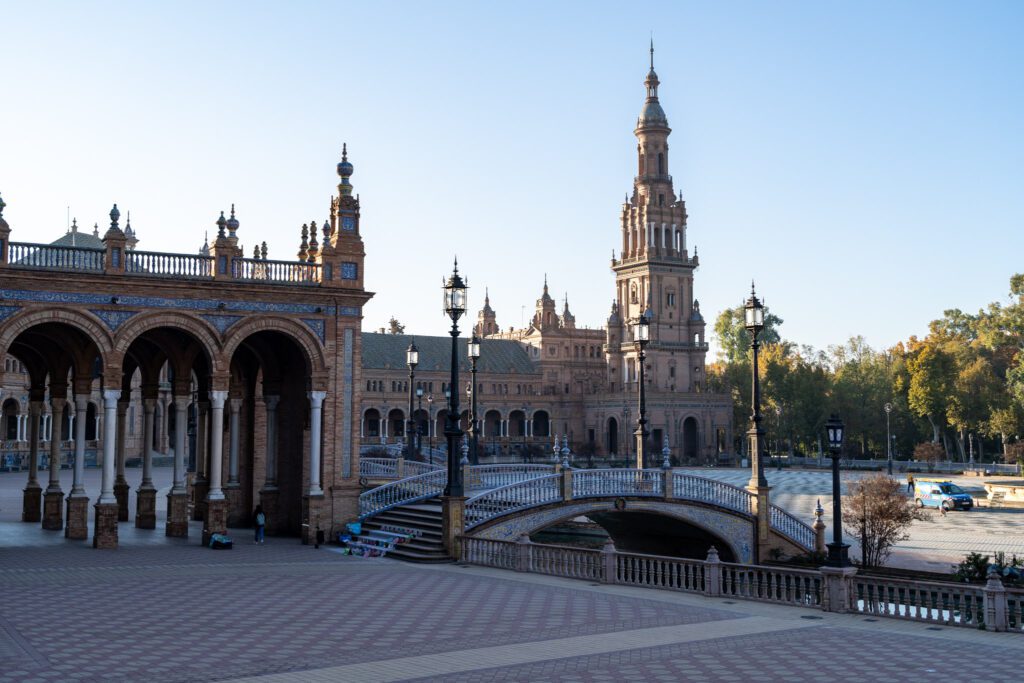
It’s a popular place, and we decided to come out here early in the morning, when we had it all to ourselves (which we’d highly recommend).
You can walk south along the river from the center of Sevilla to get there, which is a nice walk and takes you through the adjacent gardens.
Dive Deep into Sevilla’s Culinary Delights
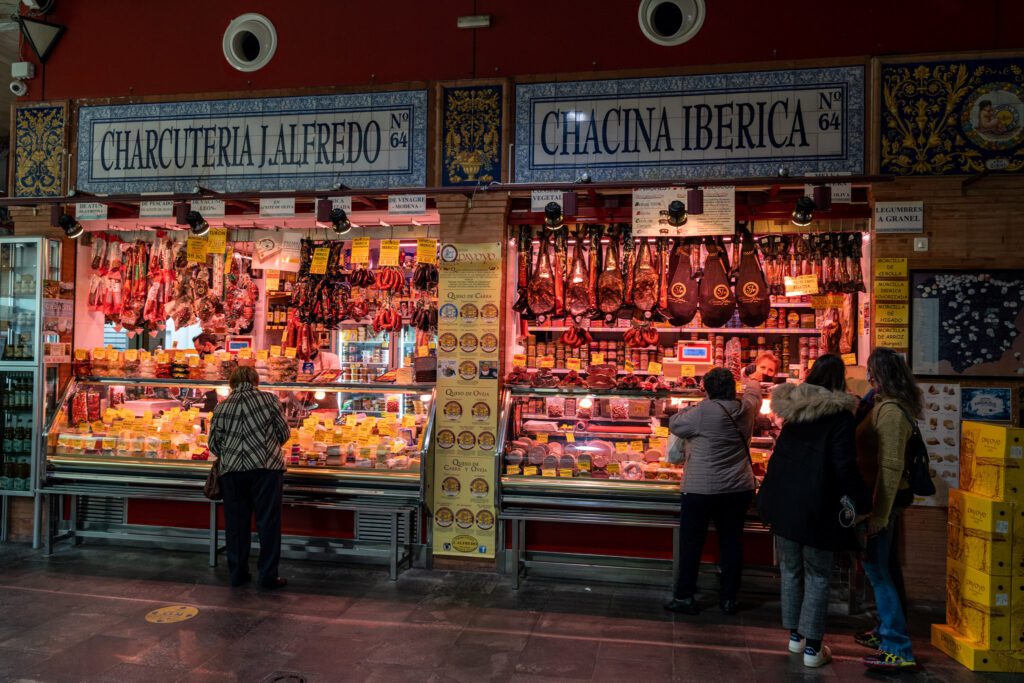
Sevilla is probably the most interesting of the food cultures on this itinerary (although each city has its own interesting specialties, like the seafood and cava in Barcelona).
Walking through town, you’ll find countless old-looking taverns packed with (what seems like mostly older) Spaniards, dunking churros in chocolate, sipping vermut or sherry, and nibbling on cheese, charcuterie, and other tapas.
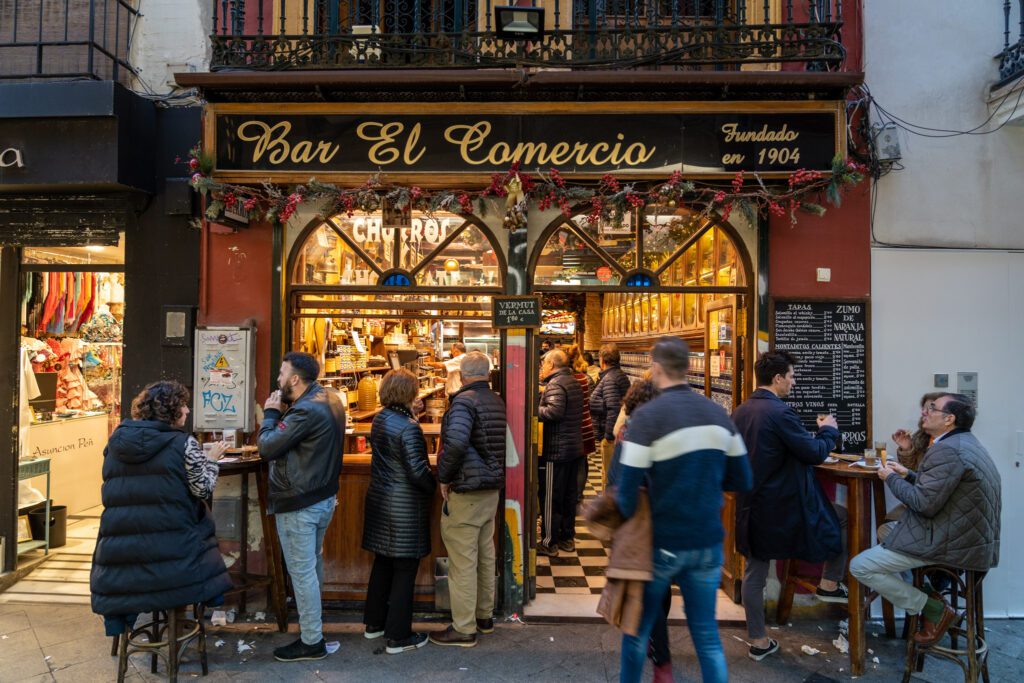
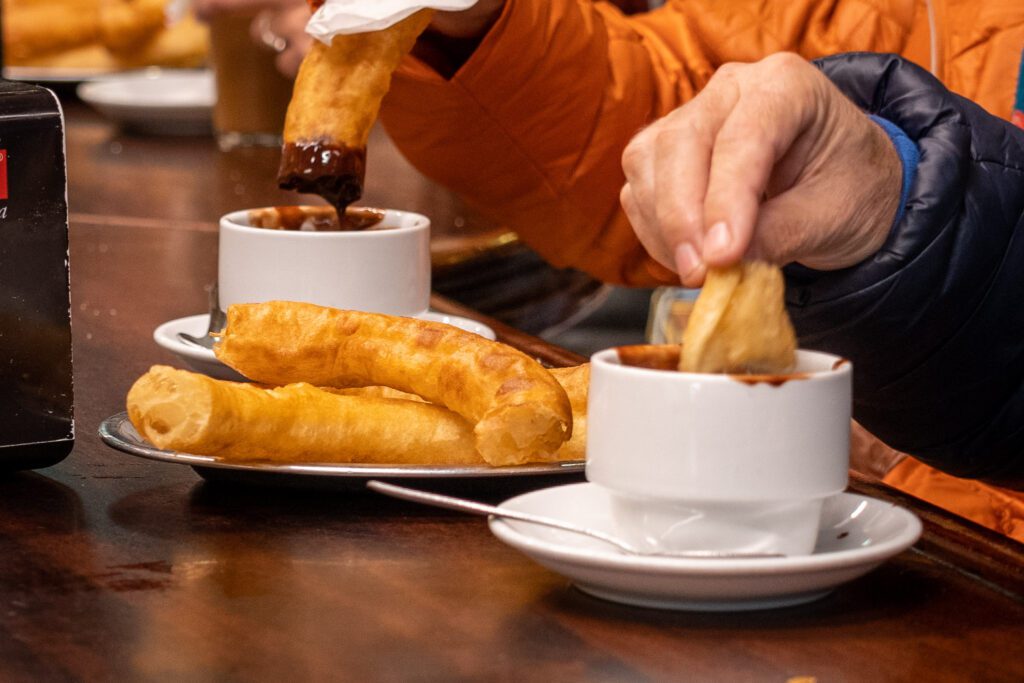
The region is chock full of excellent raw ingredients, from the olive trees as far as the eye to grapes to bitter oranges.
A couple of things to make sure not to miss – vino de naranja (a white wine made with orange peel), Spanish vermut (vermouth, but way more flavorful than its Italian and French counterparts), churros con chocolate, and all of the cheese and charcuterie.
If you want to dive a level deeper, with the guidance of a local, I would head straight for the tours by Spain Food Sherpas, who have a highly rated 3.5 hour food tour that will take you through with the guidance of a local foodie who can give you tips on what to eat (and crucially where to eat it) while you’re in town.
Food tours don’t really work for Matt (most, including this one, have a disclaimer that people with Celiac Disease shouldn’t do it due to risk of cross-contact, which Matt appreciates), but that’s the tour we had on our list and the one we would do if given the chance.
Take a Day Trip to Córdoba
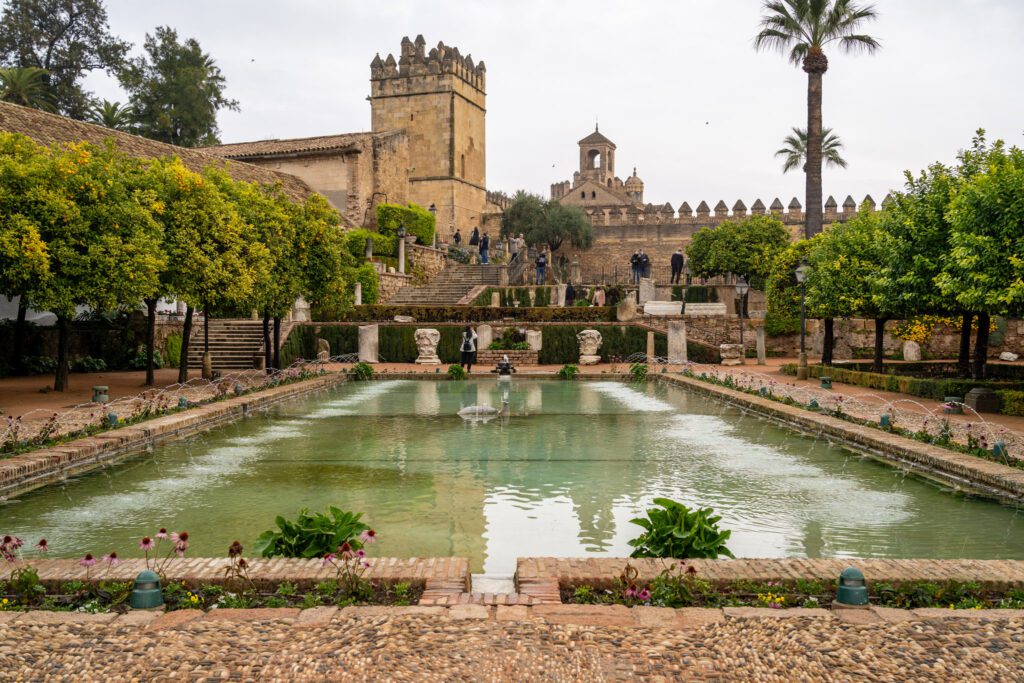
Córdoba, which is an easy 45 minute train trip from Sevilla, is another great place to dive into that unique blend of different cultures as a day trip.
The former seat of power under the Caliphate that ruled the Iberian Peninsula, the highlight is undoubtedly the Mosque Cathedral.
It’s another example of a religious building that was originally a grand mosque – one built to rival the mosques in the Middle East – but was essentially renovated to be a cathedral after the Reconquista (the coolest part is that the mosque elements are still largely intact).
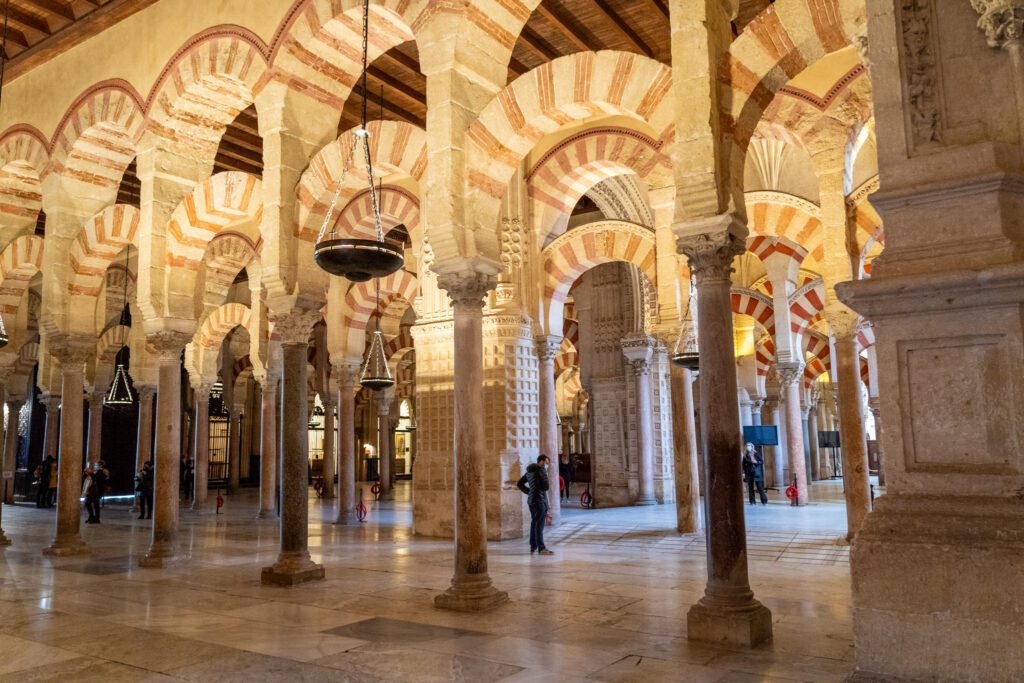
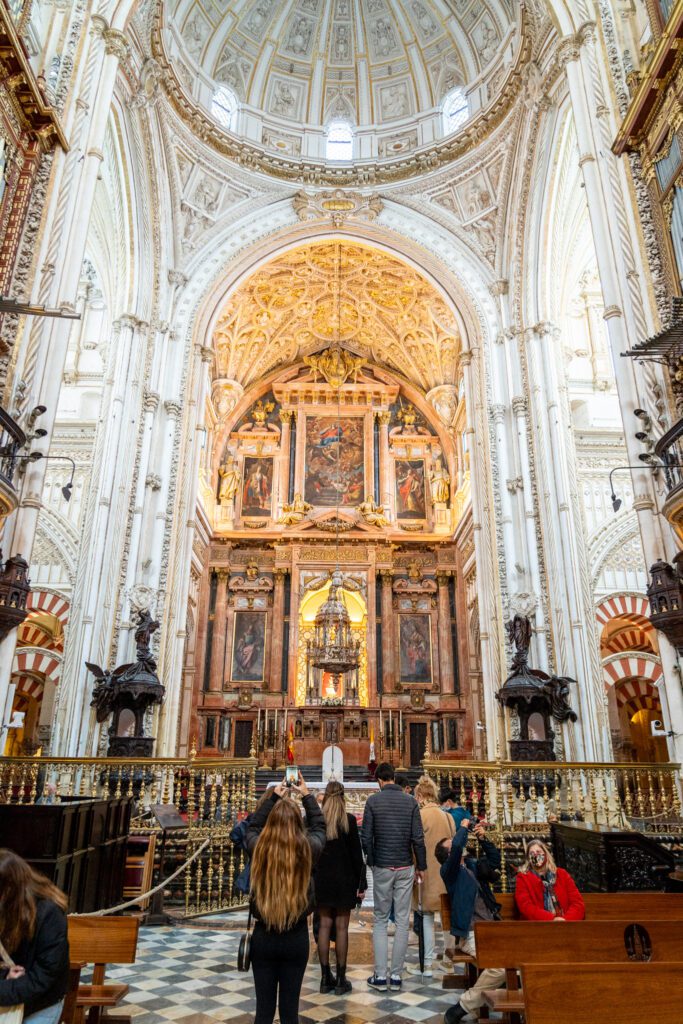
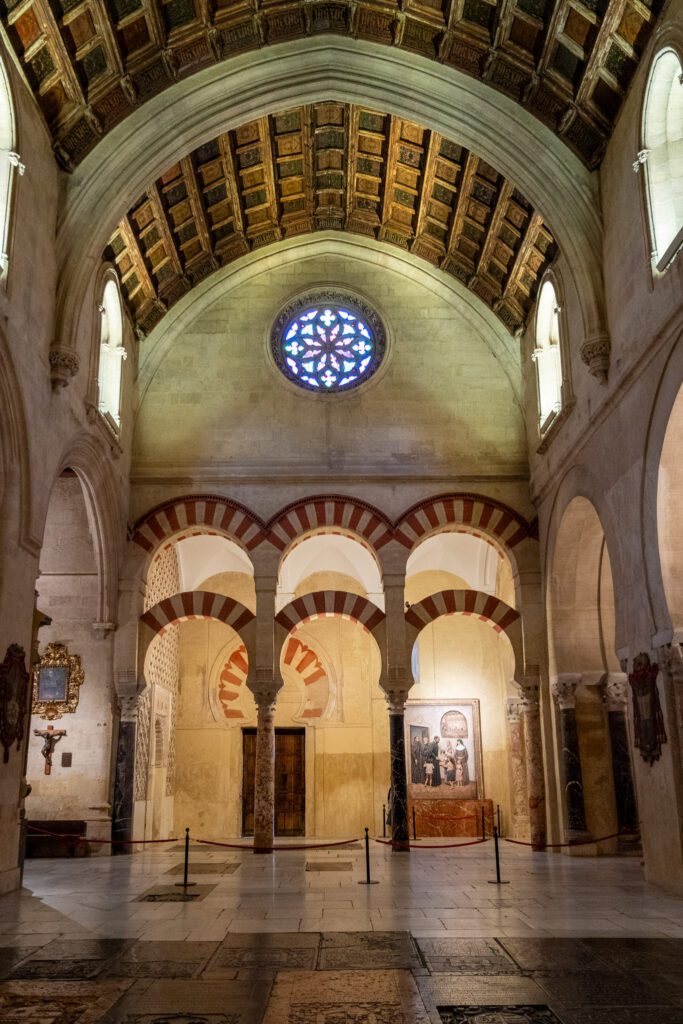
However, there are several other attractions – the Alcazar, the patios, and the synagogue – that are worth seeing, and tell a complimentary story to the one you get in Sevilla about the relationship between Spain and the various Caliphates that existed in the southern half of the Iberian Peninsula for centuries.
Rather than cover it all here, we’re going to direct you to our separate guide to planning a day trip from Sevilla to Córdoba, which has all the details (how to get there, what to see, etc etc) you need to plan your day trip.
Where to Stay in Sevilla
As far as the three Spanish cities on this itinerary go, Sevilla is by far the most compact, which means staying anywhere in the center of Sevilla will put you within walking distance of basically everything on this itinerary.
We’d recommend staying in one of the central neighborhoods that makes up the Casco Antiguo, Sevilla’s charming old town core.
We particularly like the charming Jewish Quarter called Santa Cruz.
We stayed at Casa de las Especias, which is a set of serviced apartments (like a cross between a hotel and an apartment complex) in the heart of the old town.
If you want an apartment, we’d recommend it. They also have two other properties in the city, one in Arenal (near the river) and one on the border of Santa Cruz.
If you’re looking for a boutique hostel – that’s a cross between a hotel and a hostel with private, hotel-style rooms and the social aspects you’d expect from a hostel – look at TOC Hostel.
We stayed at TOC in Barcelona and enjoyed it, and they’re known for providing a great experience.
Days 4-6: Madrid + Toledo
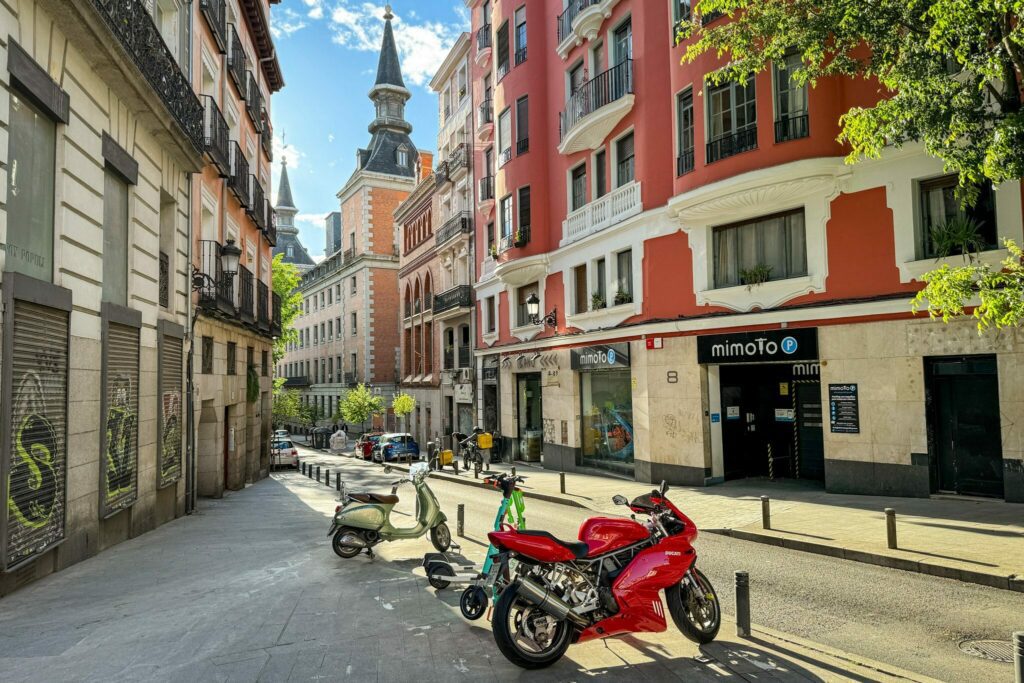
After my latest trip to Spain, I was reminded just how much I love Madrid as a city.
In fact, I think Madrid is in my top three European cities (and is probably higher when you talk about cities I’d actually want to live in).
Of the three main cities here on this itinerary, Madrid is by far the most liveable.
Barcelona has been systematically transformed into Disneyland for tourists (which means more businesses that cater to tourists, fewer that cater to locals) and Sevilla’s weather is a nonstarter for us as Pacific Northwest lovers (it gets very hot!).
But when you talk to people who go to Spain, SO MANY of them completely skip Madrid, which makes almost zero sense to me.
Madrid has a world-class art museum in the Prado Museum (more on that in a second), which is one of my favorites and I will visit every time I’m in Madrid, a great food scene (including a bangin’ gluten free food scene – read my guide to gluten free Madrid for more on that), and a very walkable city center.
Add to that a rich history – Madrid wasn’t always the capital, and nearby Toledo (a great day trip) was actually more of a power center in the region for most of its history – and you’ve got an excellent place to spend a few days exploring the story of Spain’s capital and biggest city (by far).
The point of all of this is that we love Madrid, and think you will too.
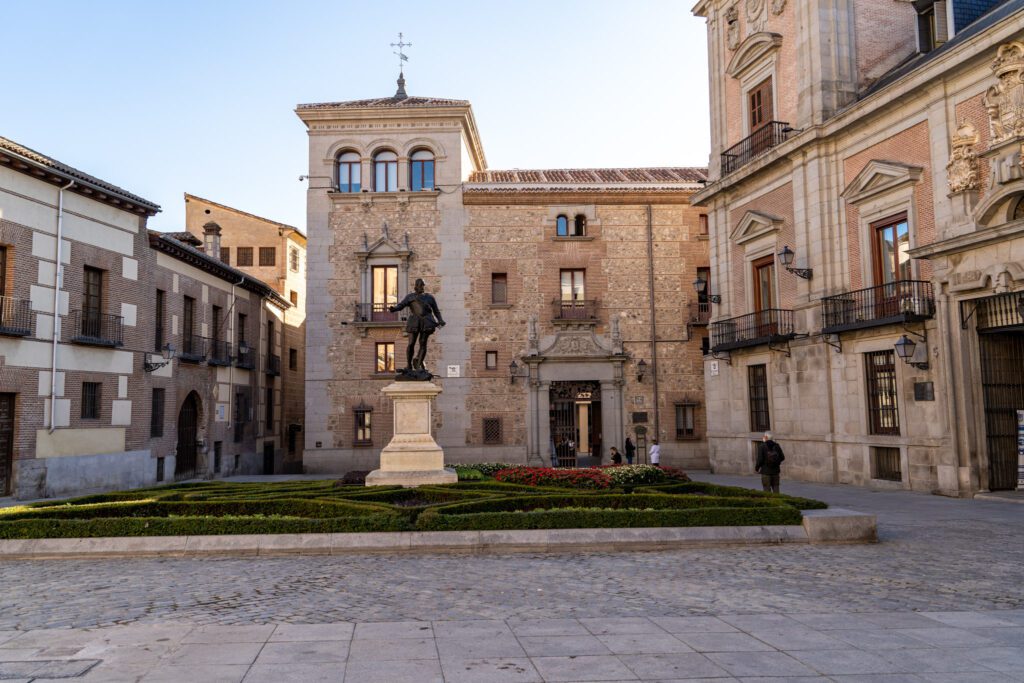
Getting from Sevilla to Madrid
From Sevilla’s Santa Justa station (which is the train station you want to plug in), you’re looking at a three hour high speed train ride to get to Madrid (make sure you’re booking the high speed trains, usually coded as “AVE”).
Departures are roughly hourly, depending on the day.
The train station you’re going to want in Madrid is Puerta de Atocha, which is on the southern end of the city center.
From there, you’ll be able to either walk or hop on Madrid’s excellent Metro to get to where you’re staying.
What to Do in Madrid
Here are some of our favorite things to do, see, eat, and drink in Madrid.
For more, we’d point you to our 2 day Madrid itinerary and our guide to the best things to do in Madrid (for first timers), which have all of our favorite things to do, see, eat, and drink in the Spanish capital.
Lexi’s Walking Tour
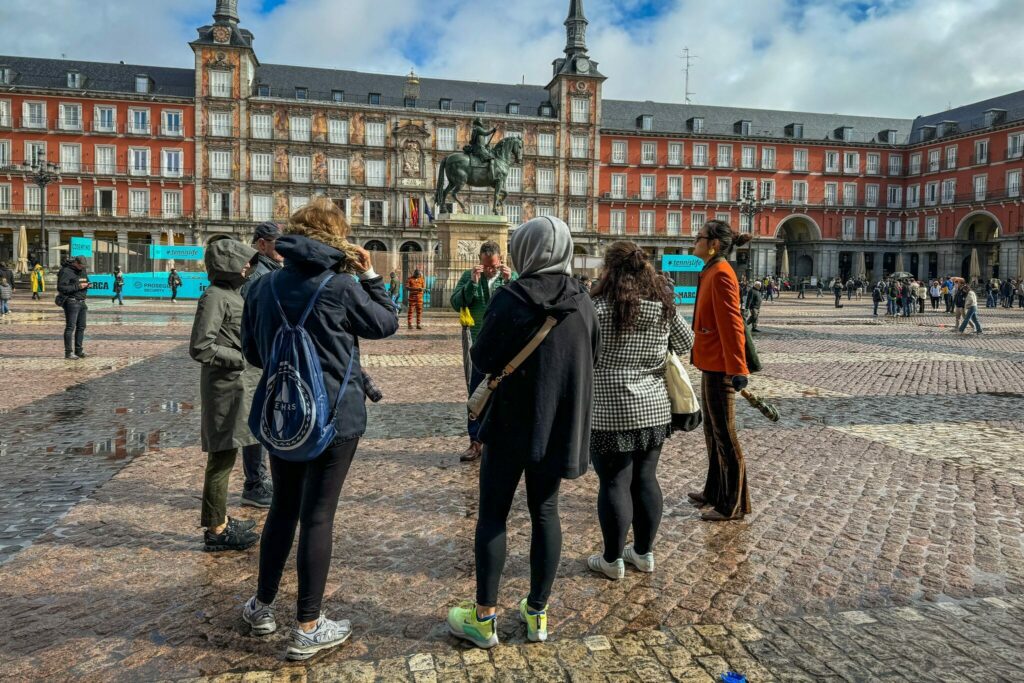
This walking tour, led by a Brit named Lexi – who is a historian with a focus on Spanish history – is perhaps the best introductory walking tour I’ve ever done in a city.
It was by far my favorite of the walking tours I’ve done in Madrid – a total of four at this point – and I feel like I’m fairly qualified to call it the “best” walking tour in the city with those experiences under my belt.
Lexi does a great job weaving together a compelling story about what makes Madrid special.
Along the way, you’ll cover the history that we find fascinating, get a list of places to eat and drink that you’d definitely never discover on your own, and learn A LOT about Spain and Madrid.
You should book this tour on your first morning in Madrid and you’ll have an excellent knowledge base to carry you through the rest of your trip (including suggestions on where to eat and drink).
Click here to check prices, reviews, and availability.
Dive Deep into Madrid’s Tapas Culture
As you’ll find out by the time you get to the end of this guide, you’re going to find tapas in every city in Spain in some form or another.
The key differences between the tapas in different places stem from the ingredients they have available. Although, in Madrid, they don’t really grow any food nearby (it’s too hot and dry), so they have to import everything.
There is a very famous street in Madrid called “Calle Cava Baja” in La Latina that is lined with an endless number of tapas bars to choose from.
A few that have been recommended to me by various people are Taberna Tempranillo, Taberna La Concha, and Casa Lucas.
Other nearby options for tapas are Casa Ciriaco (towards the Royal Palace, on Calle Mayor) and La Lina (gluten free options for Celiacs – I’ve eaten here!).
Over the past few years, I’ve dragged friends and family on food tours around the world – I have Celiac Disease, and food tours are nearly impossible for me but I like having other people with me who can experience it for themselves – I’ve found that taking a food tour is almost a better look into the culture and history of a place than a historical walking tour.
Because, at its core, food is intertwined with culture and history, and the food culture of a place says a lot about their values (food, like travel, is almost always at least a little bit political).
In Madrid, if you’ve taken my advice and done Lexi’s tour, you’re already going to have a big list of places to eat from a local, but if you want to take the next step deeper then you should do a food tour that focuses on the relationship between food and history.
Here are a few options that stood out to me in my research:
Tapas and Taverns: This tour is with Devour, an OG food tour company in Europe (and the sister company of Walks, one of our favorite tour companies in Europe) and takes you on the best kind of walking tour…one that involves multiple food stops along the way.
It’s a great way to get a taste of what makes Madrid’s food scene special, and you’ll go to a few places that are historic and you certainly wouldn’t discover on your own.
The Original Madrid Tapas Crawl: We like this tour because it focuses on a less-visited slice of Madrid’s city center – Chamberi (which we’ve explored and found to be a very liveable area – we’d totally move there).
Tons of ratings (with 4.9 stars at the time of writing) where you’ll spend a few hours visiting four different historic tapas spots and taste ten different tapas, along with several different Spanish drinks (none of which is Sangria, I assume).
Wine and Tapas Walking Tour: A local small business puts this tour on, and you’ll get more than 10 tastings as you go on a journey through Madrid’s food culture, focused specifically on tapas and Spanish wine.
The Museo del Prado
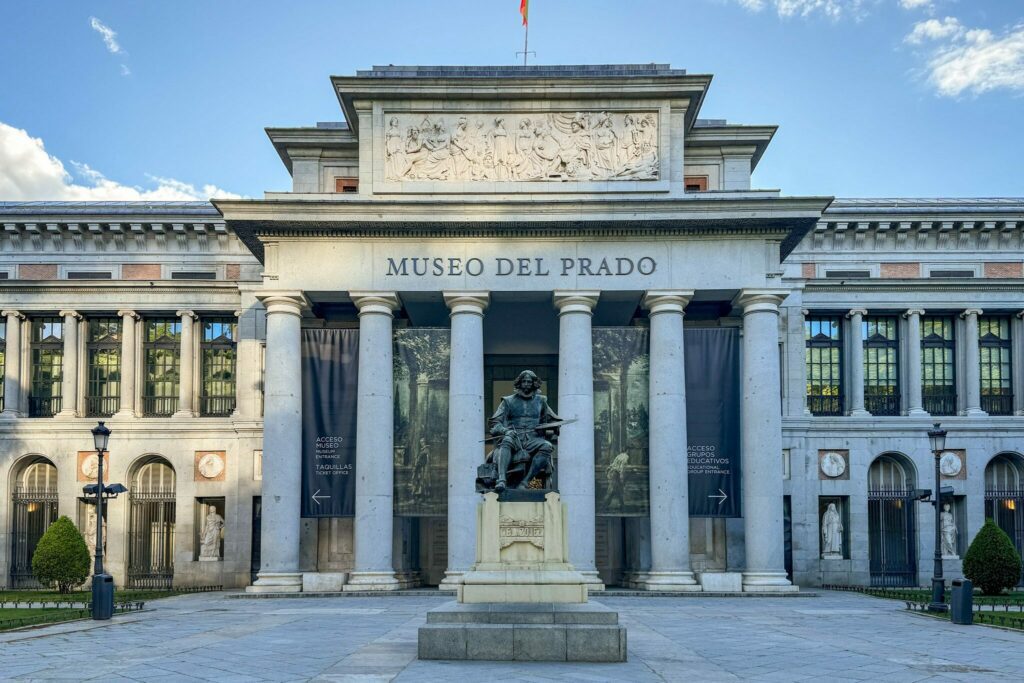
When anyone asks me about my favorite museums in the world that I’ve been to, my mind immediately skips the sprawling (often colonial) collections like the Louvre and British Museum and goes straight to the art museums that say something important about the place where they’re located.
The three that spring to mind immediately are the Rijksmuseum in Amsterdam, the Uffizi Gallery in Florence (which is basically a play-by-play of the evolution of art during the Renaissance), and the Prado Museum in Madrid, which tells a story about Spanish history through art.
A big part of the reason why I fell in love with this museum and the city of Madrid is the fact that I did a truly excellent tour of the Prado with Jaime on my first visit.
His perspective on both the art we were looking at and how it has informed and reflected Spanish history and culture was invaluable in my understanding and love of Spain.
It’s a two and a half hour tour, which I think is a good amount of time to spend on the collection, which spans hundreds of years and features work from Spanish masters like Goya and Velasquez, along with a fun collection of (somewhat disturbing) Flemish art that I, personally, loved (particularly Bosch’s Garden of Earthly Delights).
Now, it’s worth noting that this is absolutely one of the most popular tourist attractions in Spain, and the crowds can be intense, especially mid-morning.
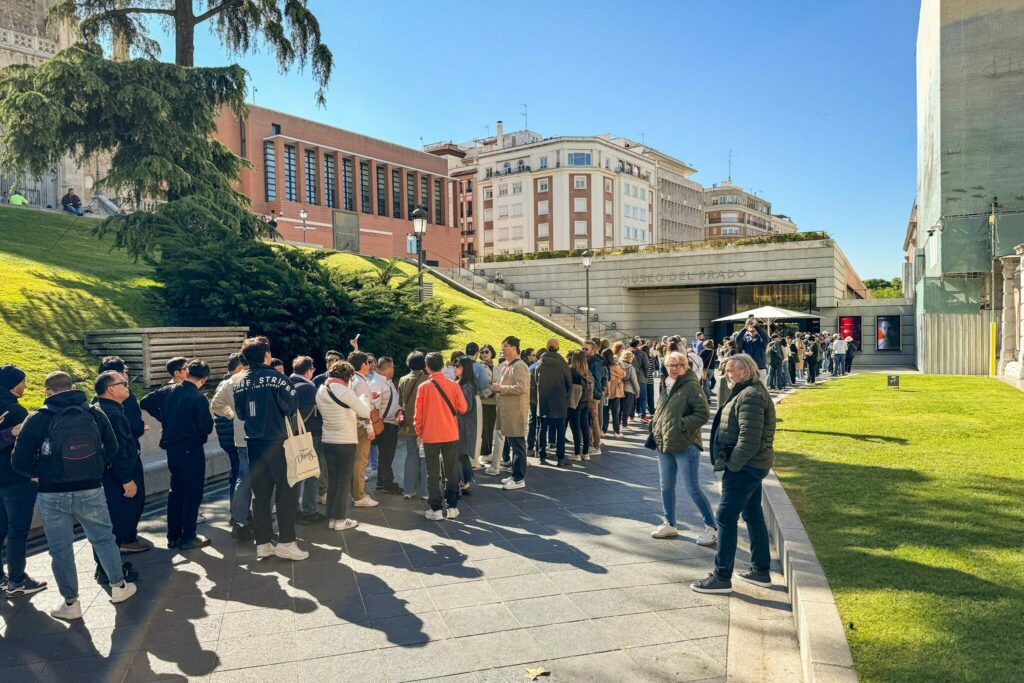
That’s something that’s increasingly true of main sights around the world, and I’ve been trying to find experiences that give you early or late access to those sights over the past few years.
Which is how I ended up at the Prado unlocking the doors with the VIP Early Access Tour with Walks (one of my favorite tour companies in Europe).
You’ll pay a premium, but I think that the fact that you literally are there when they unlock the gates and are essentially alone in the museum for an hour or so before other people enter is worth the premium (and the line when we exited was LONG).
It’s also shorter, at just 90 minutes, but it ends in the museum so you can continue exploring (as your guide what to go see!).
Explore Spain’s Contemporary Art Masters at the Reina Sofia
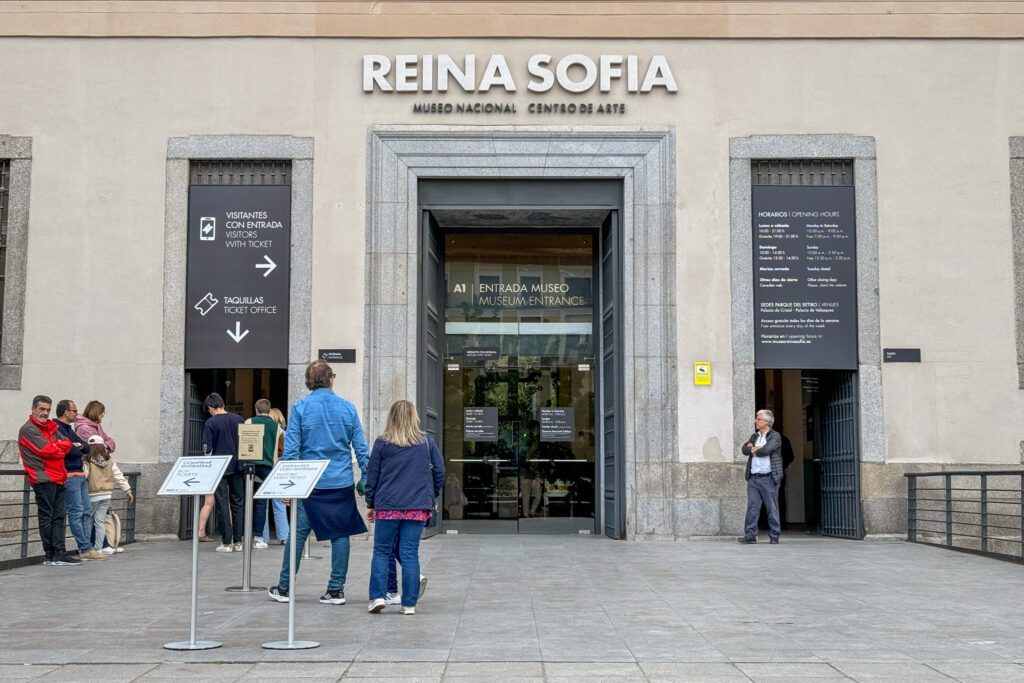
On my latest trip to Madrid, I decided to step into the world of modern art in Madrid and tackle the Reina Sofia, widely considered one of the best modern art museums in Europe featuring heavy doses of famous Spanish artists from the 20th Century.
Now, in the past, I had some vague notion that modern art is “dumb” because it’s so abstract.
My family and I often share a chuckle at our experience at the Centre Pompidou in Paris, where we encountered a piece that was essentially a wooden chair and a string of lights.
And, to be honest, I still struggle to comprehend what I’m looking at sometimes.
But the important thing that I don’t think I realized is that the term “modern art” is fairly vague, and really just means “art from 1900 and beyond,” which encompasses A LOT.
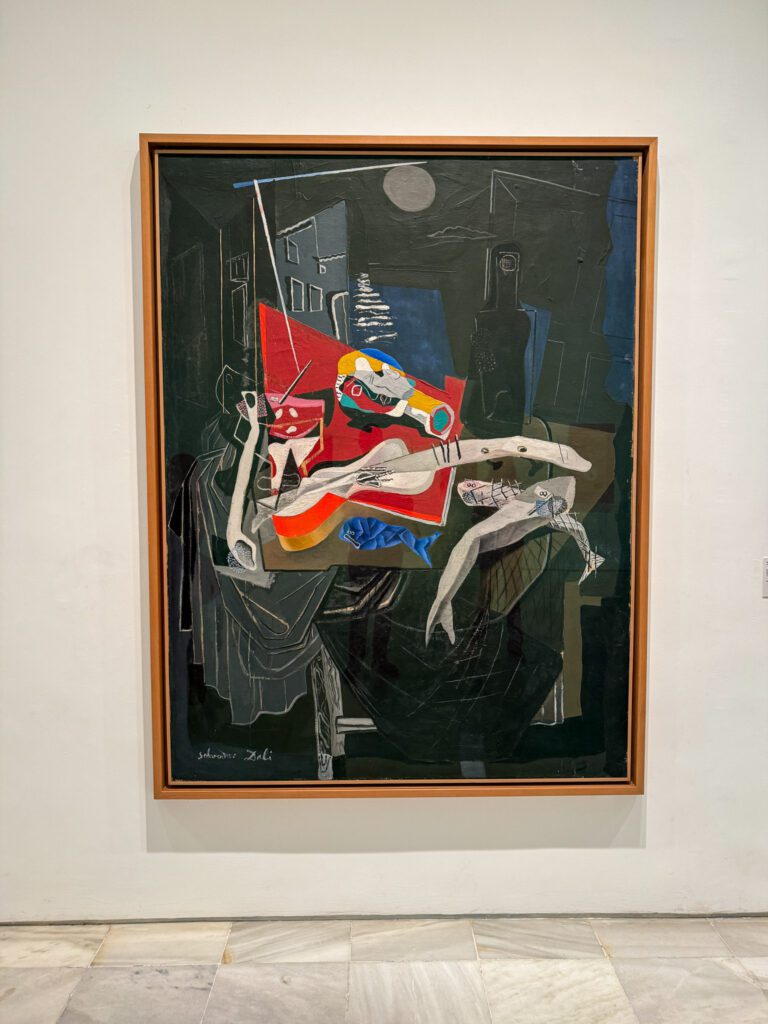
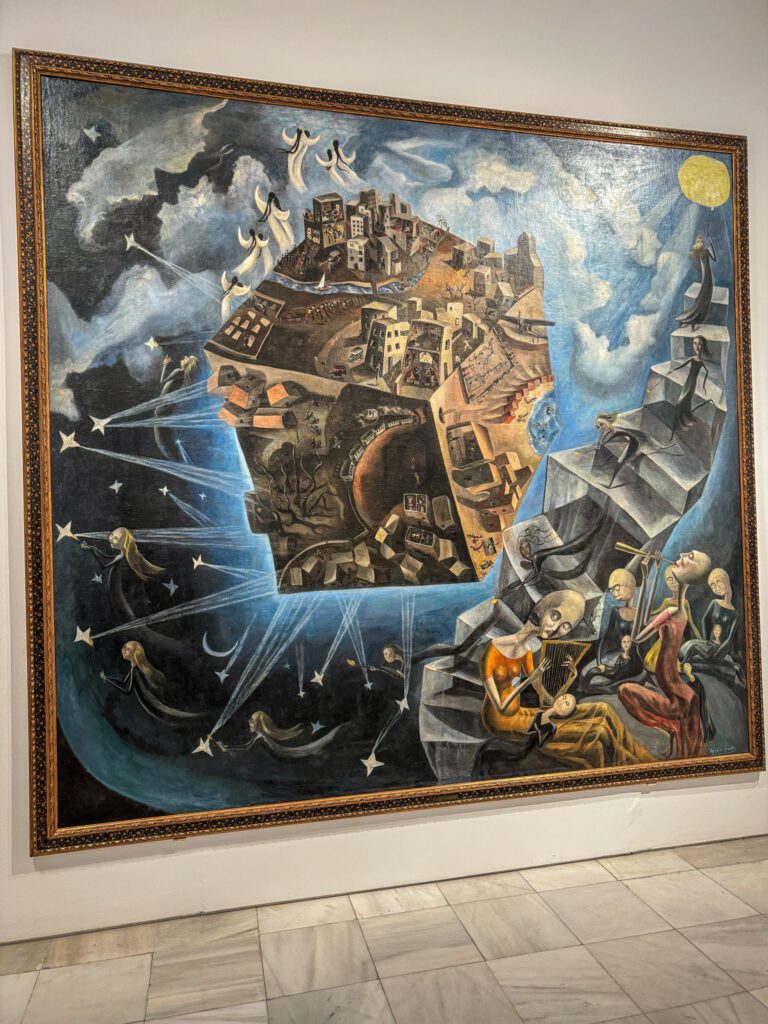
This particular collection is important because it features work from some of Spain’s contemporary superstars – Pablo Picasso and Salvador Dalí.
I decided to do this guided tour to help with the interpretation and context around those two famous artists, and I ended up really enjoying it and walking away with a greater appreciation (and broader understanding) for “modern art” as a concept.
Take a Day Trip to Toledo
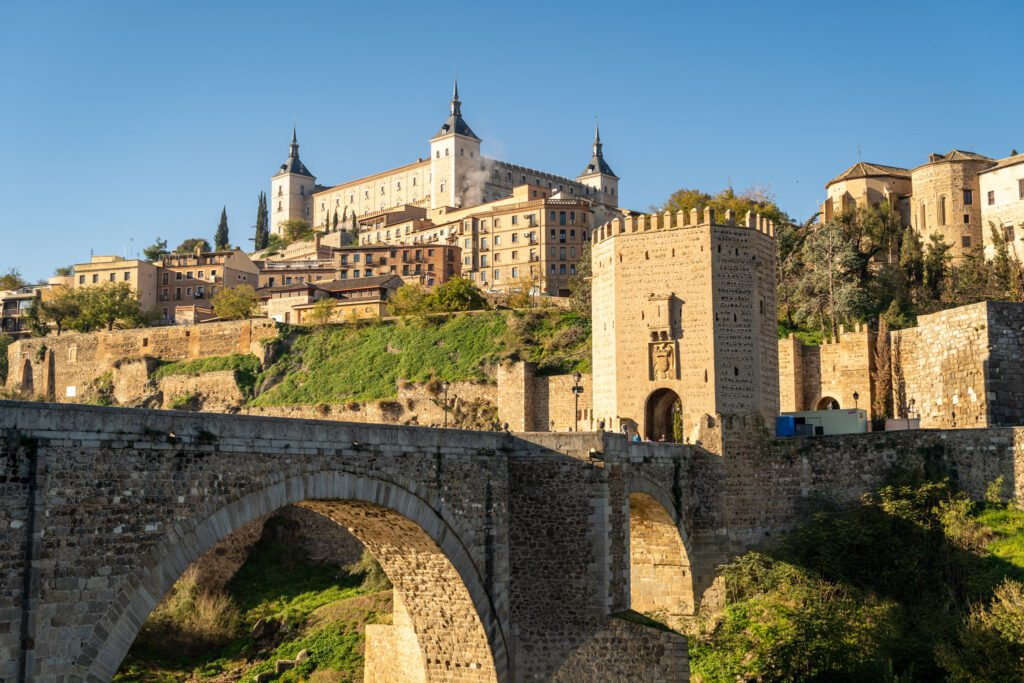
Of the many day trip options that you could take from Madrid, we think Toledo is the most important from a historical and cultural point of view.
Until Phillip II moved the capital to Madrid in the 16th Century to get away from a nagging archbishop, Toledo was the seat of power in the region.
And, to be honest, Toledo as a capital makes a LOT more sense.
It’s a strong position on a hill, it’s on a river (the Tagus), and it’s more well connected to the areas nearby as a result.
Toledo has a similar history to other places mentioned in this itinerary.
It was first an Iberian settlement captured by the Romans, then it was a Visigothic city until the Umayyad Caliphate showed up and captured it. Then, it was reconquered in the 11th Century.
The result was a city that had three large religious groups all living in one place: Muslims, Jews, and Christians.
And that, my friends, is why we think it’s worth visiting today – there are examples of religious sites from all three, including a gorgeous synagogue, a relatively modest mosque, and a massive cathedral (Catholics live by the “bigger is better” maxim) and monastery.
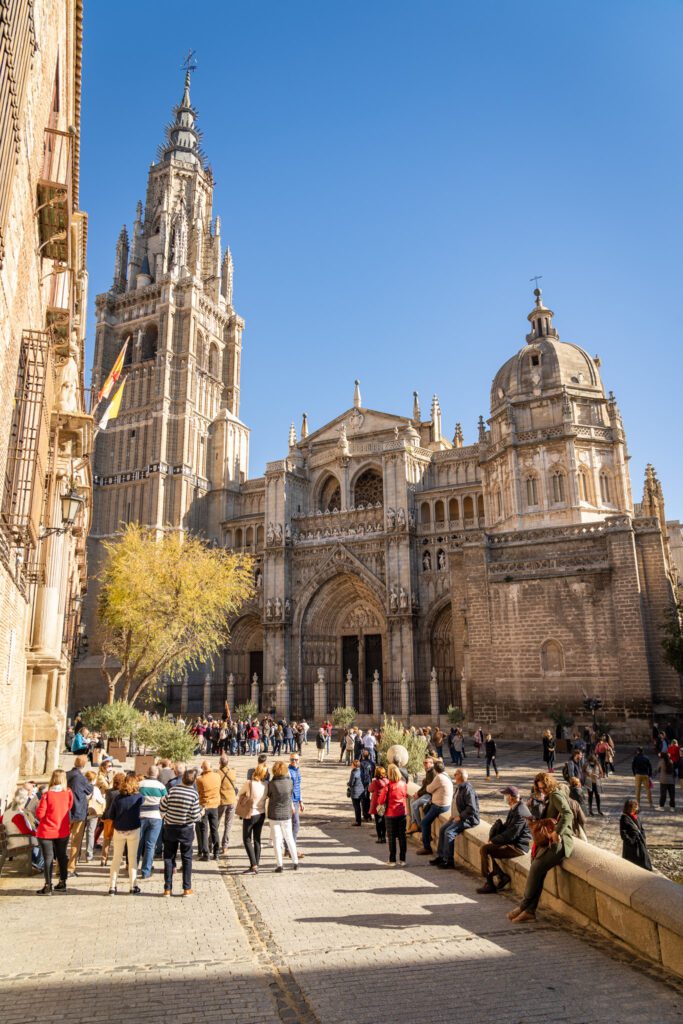
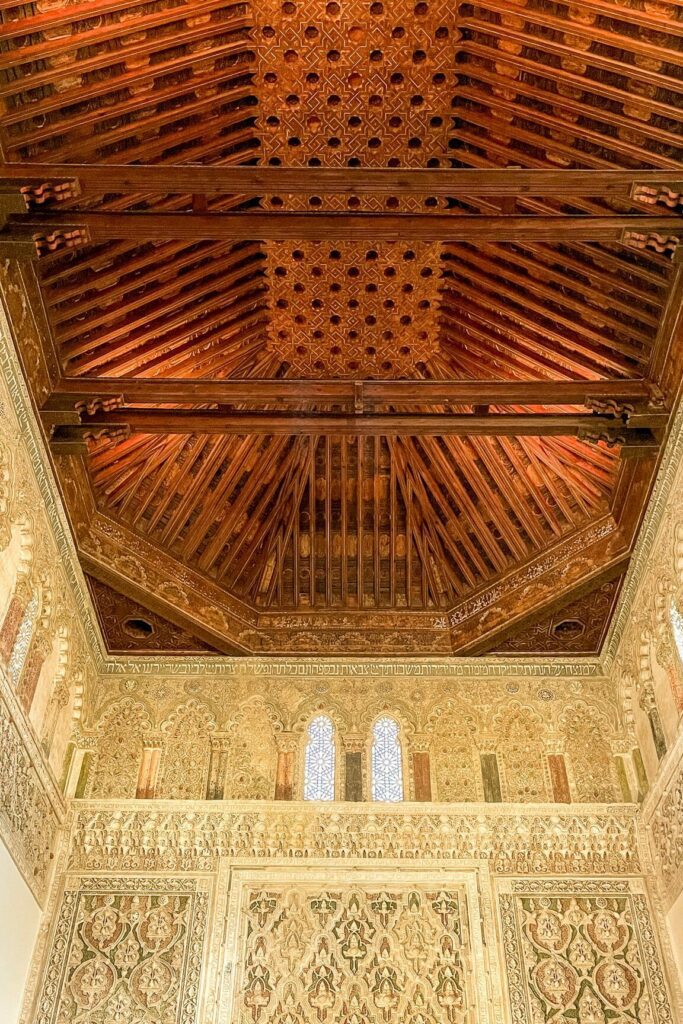
Add to that the proximity to Madrid (~45 minutes by high speed train), the fact that it’s a beautiful city perched on a hill overlooking a valley and the river, and that it has a pretty excellent military museum, and you have all the reasons why we think it’s worth spending a day of your precious trip here.
Rather than list all the things to do and see in Toledo, we’ve put together a separate guide with all the information you need to plan an excellent day trip to Toledo (from Madrid) – currently in progress!
Where to Stay in Madrid
Despite being the biggest city in the country, the slice of Madrid’s city center that you’re going to be focused on is actually relatively compact and easy to navigate.
The grand boulevard in Madrid that bisects the city center in two is Gran Vía, a wide multi-lane road running east to west lined with multi-floor malls, huge hotels, and billboards that evoke Times Square in New York City.
It forms a nice boundary between the more traditional neighborhoods on the southern side of the city center like La Latina or Barrio de las Letras, and the more trendy, upscale neighborhoods on the northern side of the city center like Malasaña, Chueca, and Salamanca.
For all of the details behind this summary below, we’d point you to our more detailed guide to the best places to stay in Madrid, which has a complete neighborhood guide for all of the neighborhoods mentioned above.
Our overall recommendation for first timers in Madrid is Malasaña, which is our favorite part of the city.
It’s in a central location – I walked everywhere when I stayed here – and it has tons of great places to eat, drink, and shop.
Plus, it’s full of narrow streets and bustling plazas, which are peak Madrid to us. I
If you want a hotel, look at the beautiful 7 Islas Hotel. If you want an apartment, I stayed at Sonder Malasaña and loved it (and it was quiet!).
If you’re looking for a slightly more affordable and equally convenient area, look at Barrio de las Letras.
It’s on the southeastern side of the city, close to both Parque El Retiro and the train station (Atocha), and it’s historically the part of the city where literary figures like Hemingway and Cervantes spent their lives.
It toes the line between being central but still retaining a lot of the character that makes Madrid special, with plenty of places to eat, drink, and be merry within its borders.
If you want a hotel, stay at Room Mate Alba, a nice boutique hotel right in the middle of all the action.
If you’d prefer an apartment, look at limehome Madrid La Bolsa (we’ve stayed at limehome properties in Spain before, and this location gets really good reviews).
Days 7-10: Barcelona + Day Trip
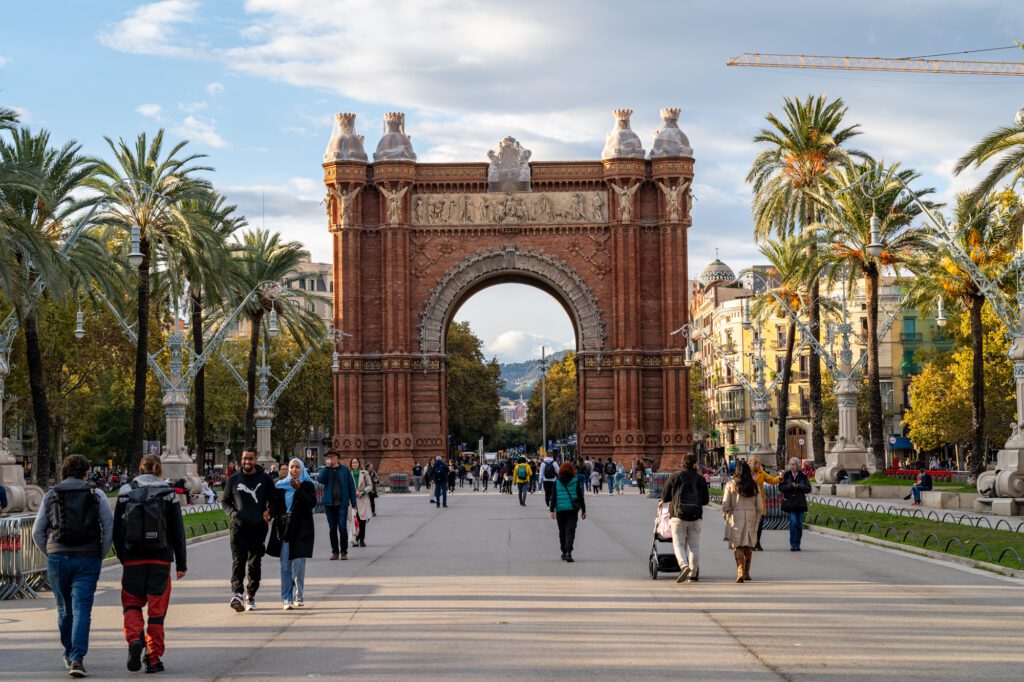
Finishing your trip in Barcelona was an intentional choice by us because, by the end of this itinerary, you’ve gone on a journey through several unique subcultures within Spain’s borders.
Barcelona is ground zero for one of the most fervent political debates in modern Spain, and it has to do with the relationship between Catalonia – one of the economic powerhouses of the country – and the Spanish government.
Catalonia has a unique cultural identity that is very much separate (but inextricably linked) from Spain as a whole – they have their own language that is sort of a blend between Spanish and French (which makes sense from a geography perspective, since Catalonia is on the French border).
If you’re interested in that identity, it’s worth spending some time learning about the history behind it at the Museu d’Història de Catalunya, which we very much enjoyed.
Putting the modern political landscape aside (sort of), Barcelona is an odd city, at least to us.
It’s kind of like San Francisco – where we met, got married, and lived for just under a decade – in that a huge chunk of the population is not originally from the city.
Obviously, the big hubs in Europe are full of people from all around the world who have come there for work (similar to San Francisco), but even places like Paris and Rome feel like real Parisians and Romans actually live there.
Walking through central Barcelona – namely the Gothic Quarter – it feels like it’s all tourists, restaurants and shops that cater to those tourists, and fancy hotels.
We’re not here to legislate the whole “are tourists good or bad” debate – obviously we believe in the positive impacts that travel can have both on individuals and the world (read Matt’s mini manifesto here) – but it is certainly worth keeping in mind that tourism has hollowed out the center of Barcelona.
There is no better emblem of that than “Las Ramblas,” the most well known (and also the worst) street in Barcelona. It’s all tourist traps and places selling knick-knacks to cruise ship passengers.
It’s sad, because the Gothic Quarter (home to Las Ramblas) is the historic center of Barcelona, where it all started back in the period when the Romans were the kings (and queens) of the Mediterranean.
Which, now that I say it, is actually a good metaphor for where we are today, where rich multinational corporations and investors have changed the character of an entire city, usually at the expense of the local populace.
The point of all of this is to encourage you to spend almost all of your time in Barcelona away from Las Ramblas.
There is a ton to do and see in the city, and it’s a great contemporary city (as long as you know where to look).
Getting from Madrid to Barcelona
Similar to the train connections from Sevilla to Madrid, you’ll have plenty of options in terms of high speed trains from Madrid’s Puerta de Atocha station to Barcelona.
Trains run hourly, and it will take you around three hours.
In Barcelona, you’re going to arrive at Barcelona Sants Station, which is on the western side of the city. From there, you’ll either hop on the metro or take a taxi to your final destination (aka where you’re staying).
What to Do in Barcelona
Here are some of our favorite things to do, see, eat, and drink in Barcelona.
For more, we’d point you to our 4 day Barcelona itinerary and our guide to the best things to do in Barcelona (for first timers), which have all of our favorite things to do, see, eat, and drink in the Spanish capital.
The Sagrada Familia
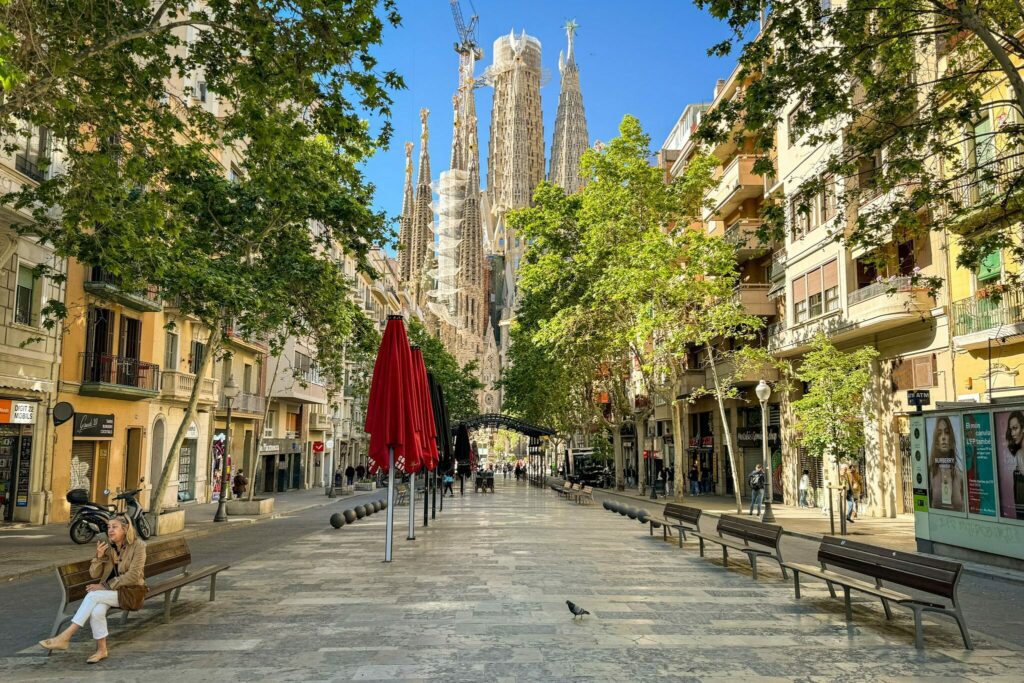
Look, we’re not huge “go into every church” people, but I will absolutely make an exception for this masterpiece in Barcelona, which I have now seen three times and will absolutely return next time I’m in Barcelona.
The thing we love about the Sagrada Familia, the basilica (not a church, because it has been blessed by the Pope, not a cathedral because it is not the seat of a bishop) that Gaudí spent several decades bringing to life, is the fact that every single little detail has been carefully considered.
My favorite part of the basilica is the fact that the way it is oriented, with the “life” facade facing the sunrise and the “death” facade facing the sunset, mirrors the life of Jesus, with life beginning with the sunrise and ending with the setting sun.
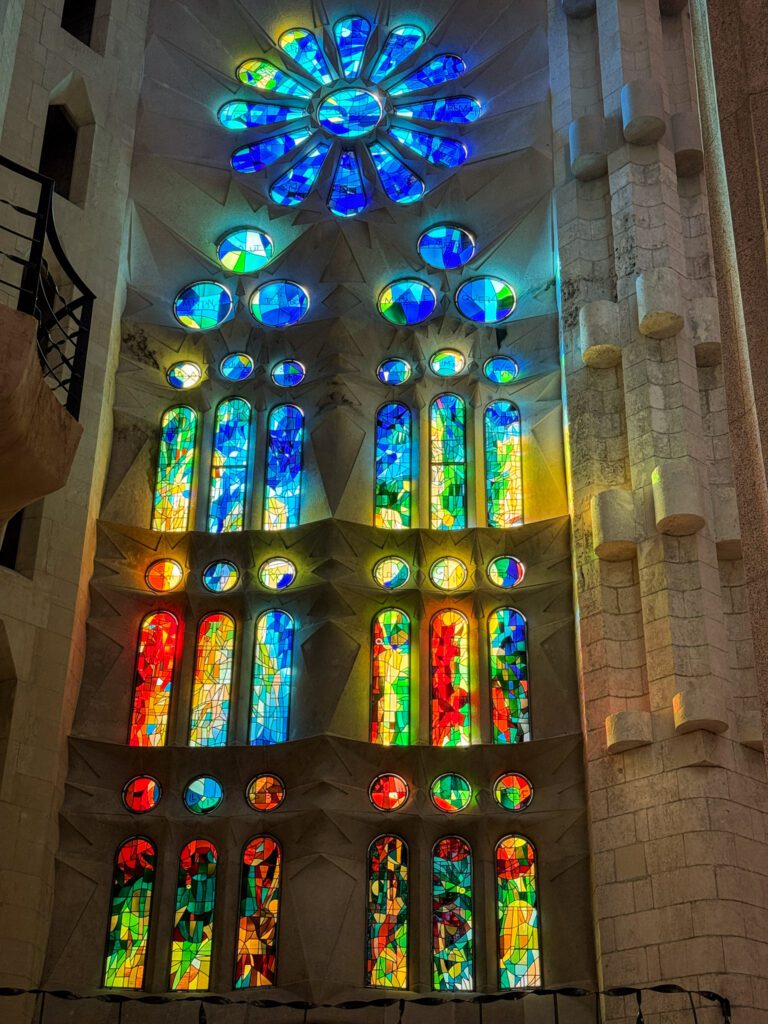
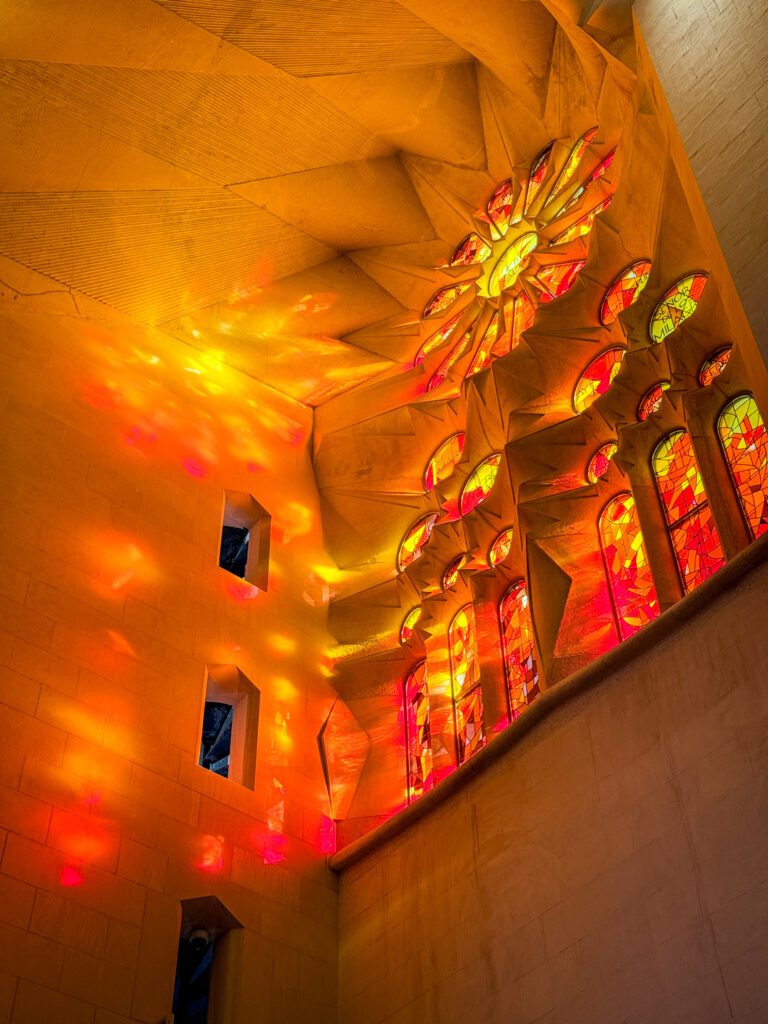
The best way to experience it is on a guided tour (we’d choose this two hour tour, which is with a company that we’ve done many tours around Europe with including a tour in Barcelona that included an abbreviated visit to the Sagrada Familia).
If you don’t have the budget for that, we’d definitely get the audio guide, which will give you the information you need to fully comprehend all of the little details that make this piece of art special.
Buy tickets well in advance here.
The Rest of the Gaudí Sites
There are four other Gaudí sites in Barcelona that are worth considering.
The first two are the two private residences he worked on that sit along Passeig de Gràcia, the wide (bougie) street that connects the Ciutat Vella (old town) with the town-turned-neighborhood of Gràcia.
Casa Batlló and Casa Milà (also called “La Pedrera”) are a few blocks away from each other, and are both worth doing if you have the time and interest.
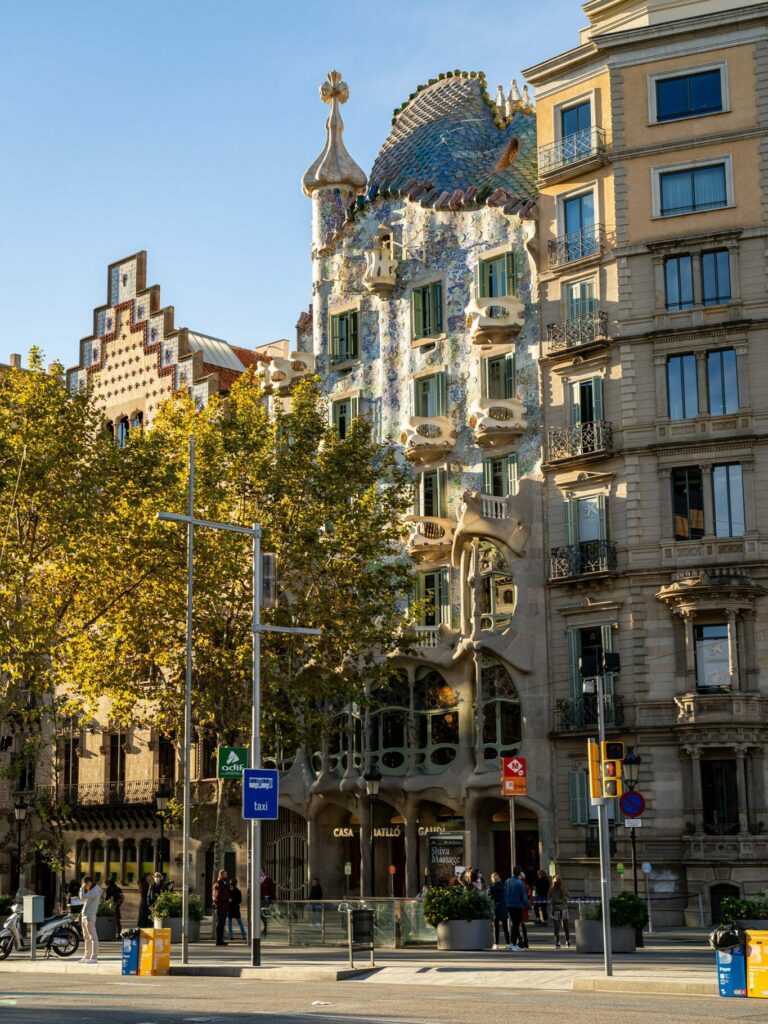
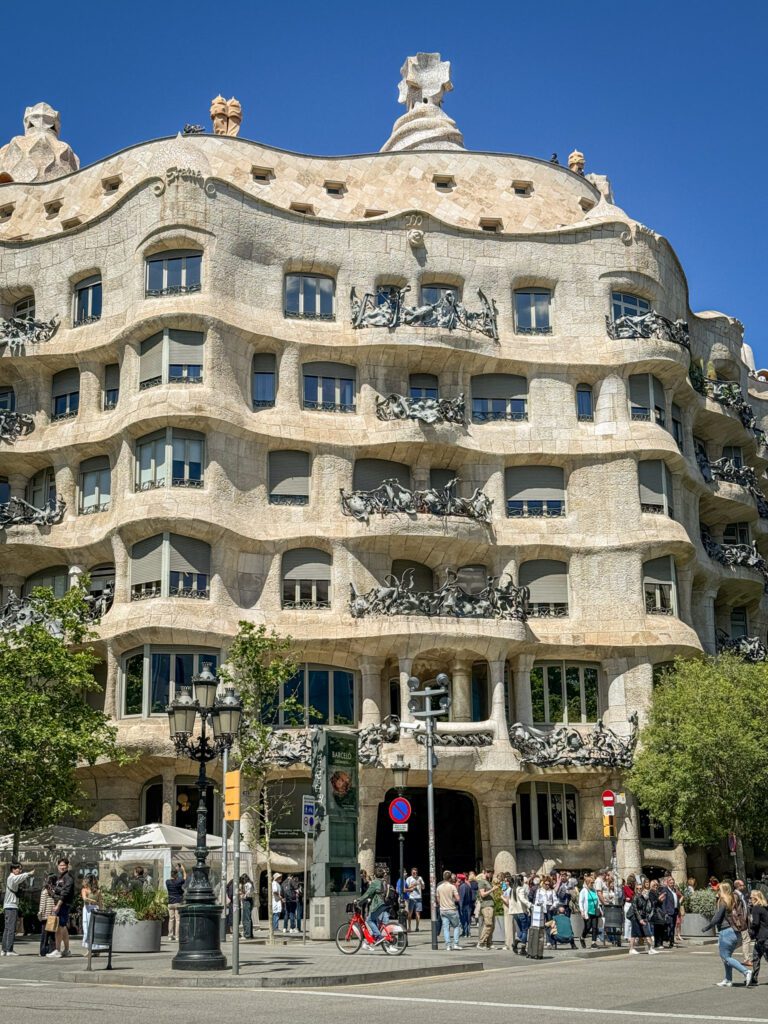
Our advice would be to choose one (and we’d opt for Casa Batlló, if we had to choose) and go at the earliest possible time slot (or book this early entry tour) because they both get incredibly busy, with long lines wrapping around the block.
The third site is his first private residence, Casa Vicens, and honestly, it would be our top choice of the three residences we’ve mentioned because it’s a little out of the way and, therefore, a lot less busy (but still fascinating, especially considering it was early in his career).
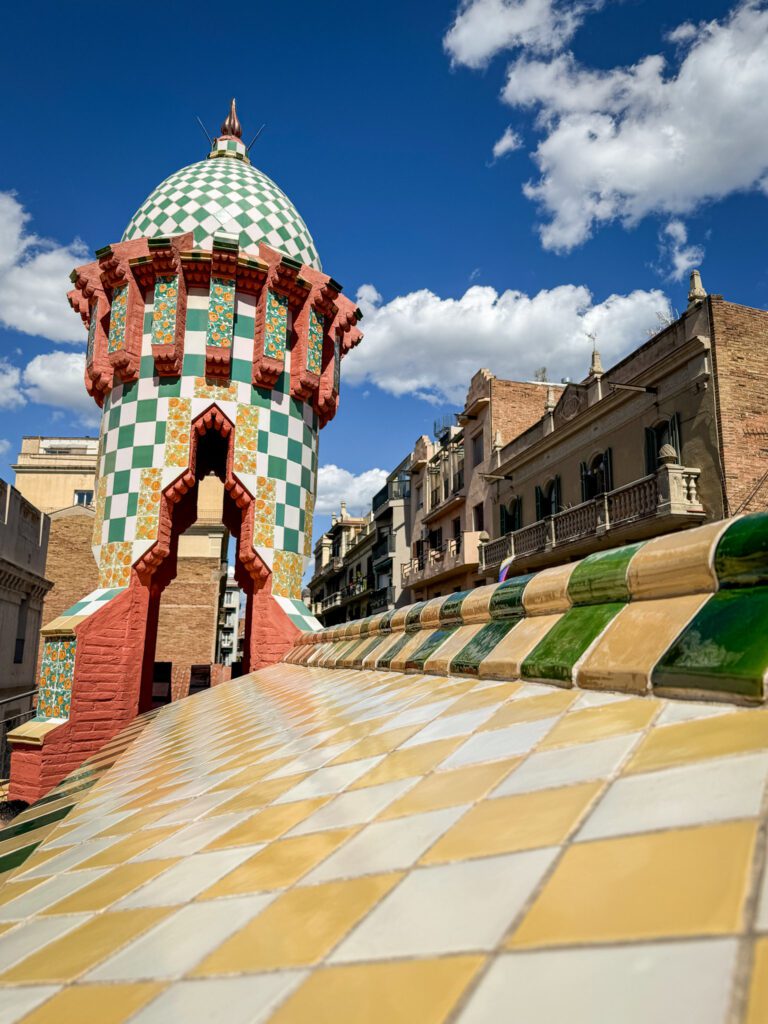
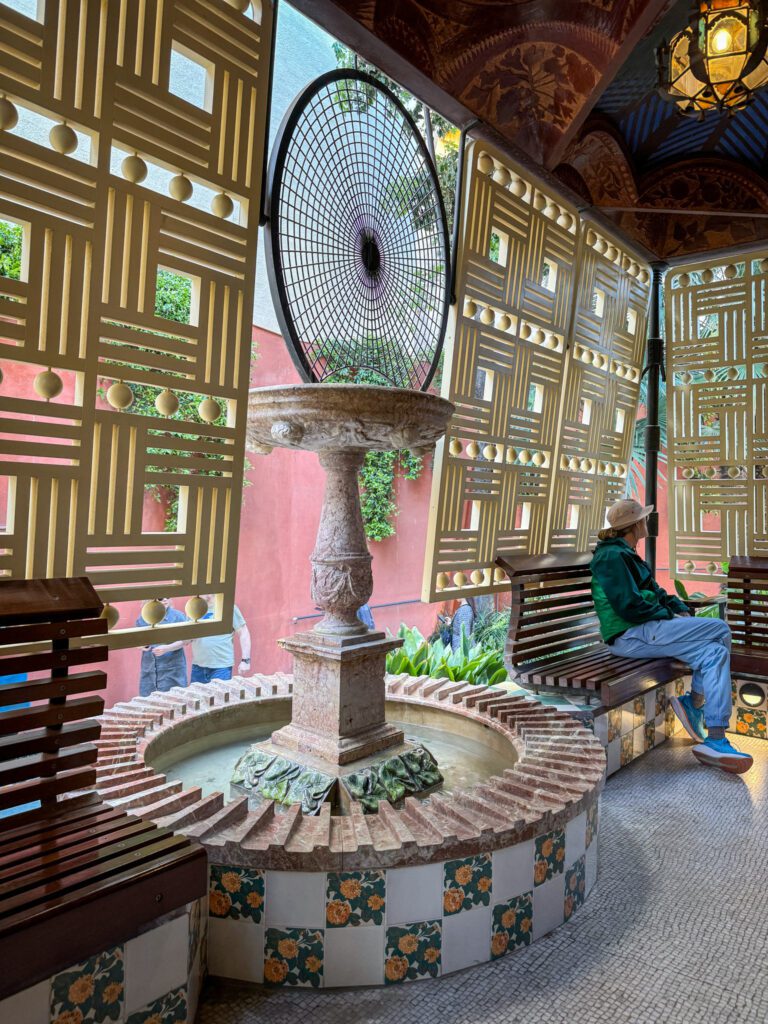
Last, but certainly not least, is Park Güell, which is set up on the hill and was not built to be a park, but a neighborhood for rich people (unfortunately, the idea didn’t take off and the only houses there now are for Gaudí and his personal lawyer).
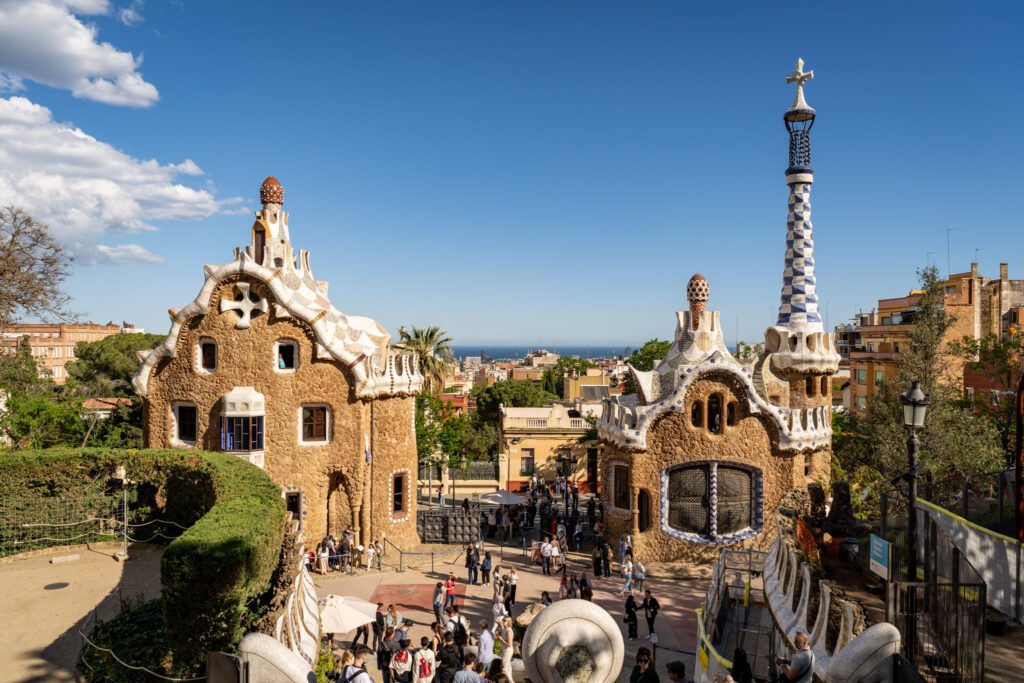
All of these attractions are very, very popular, and you’re going to want to book tickets well in advance (and the earlier the time slot, the better).
Explore a Local Market (or Three)
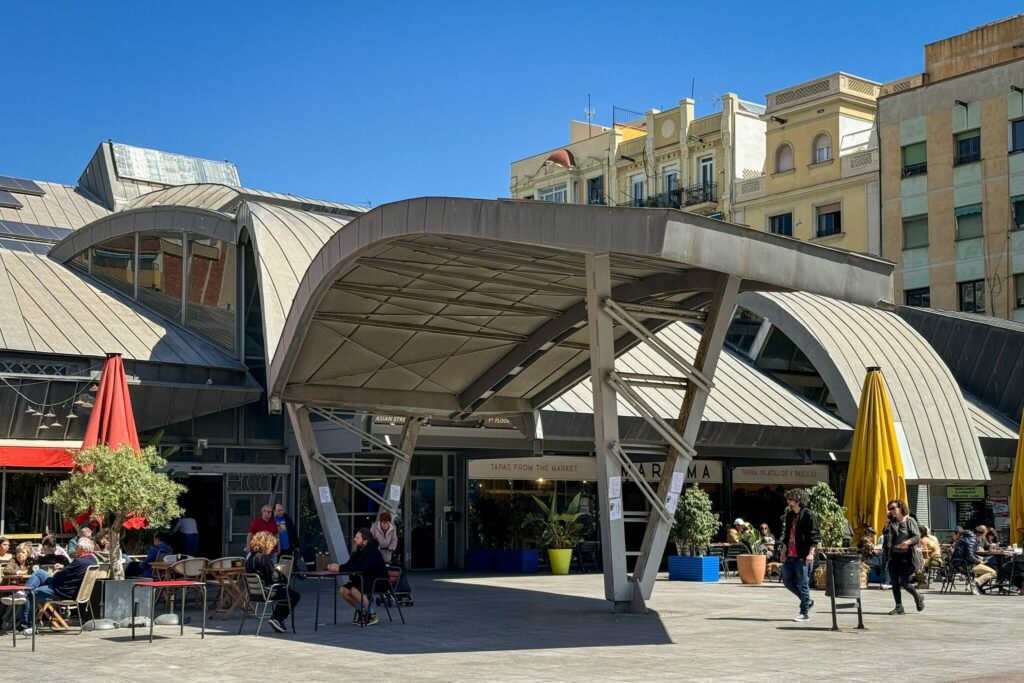
One of the things we really love about Spain is the fact that each neighborhood in its big cities generally has its own covered market, which is partially a place to grab groceries with stands selling meat, cheese, produce, etc, and part ready-to-eat food stalls.
In Barcelona, we’d skip La Boqueria (the food market on La Rambla) and instead head to either Barceloneta Market (one of the most authentic versions of this phenomenon, here on Google Maps) or Mercado de Santa Caterina (here on Google Maps).
Go hungry, and plan to stop at two or three food stalls to try some different small plates.
Cava, Vermouth, and Tapas
While you’ve already experienced tapas in the previous two cities on this itinerary, one of the things we like about Spain is that the tapas change from region to region, and you get a unique flair in each place that reflects the bounty of local ingredients available there.
Barcelona has its own unique tapas culture that sets it apart from other places you’ve already experienced on this itinerary that is mostly driven by the different ingredients available here.
It revolves around cava, a sparkling wine that is made in Catalonia, vermouth (which you’ve likely already encountered, but you should head to Las Vermudas to try it again), and more seafood-based tapas (including things like grilled sardines and bombas, which are similar to croquettes and something you should try at La Cova Fumada in Barceloneta).
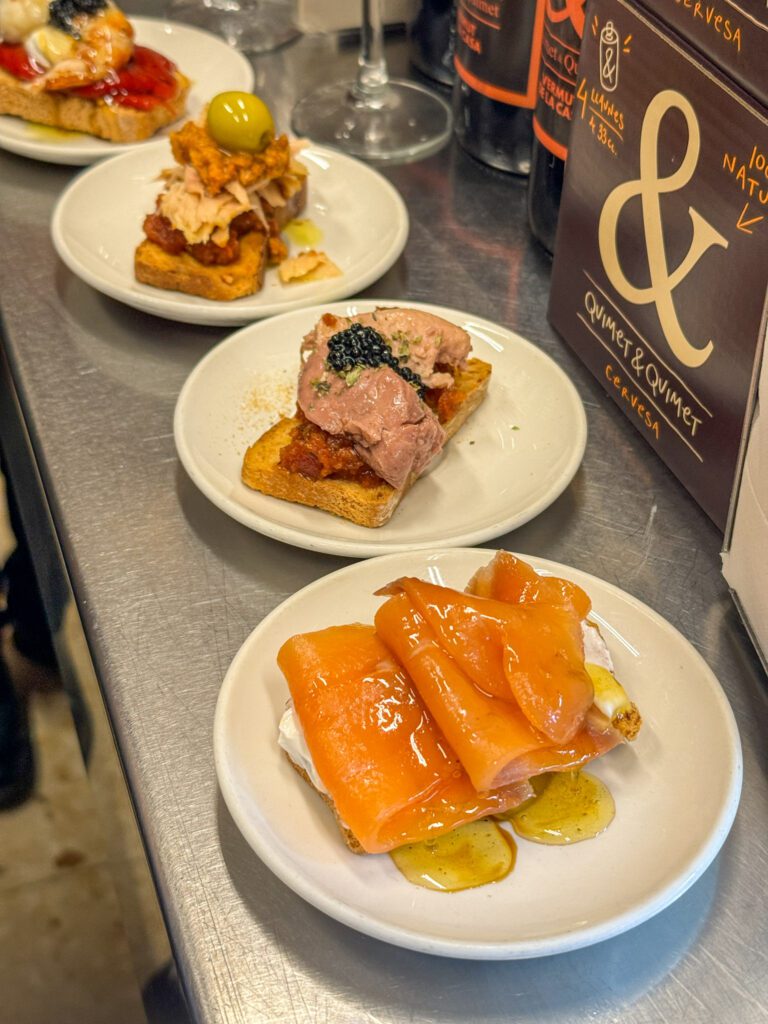
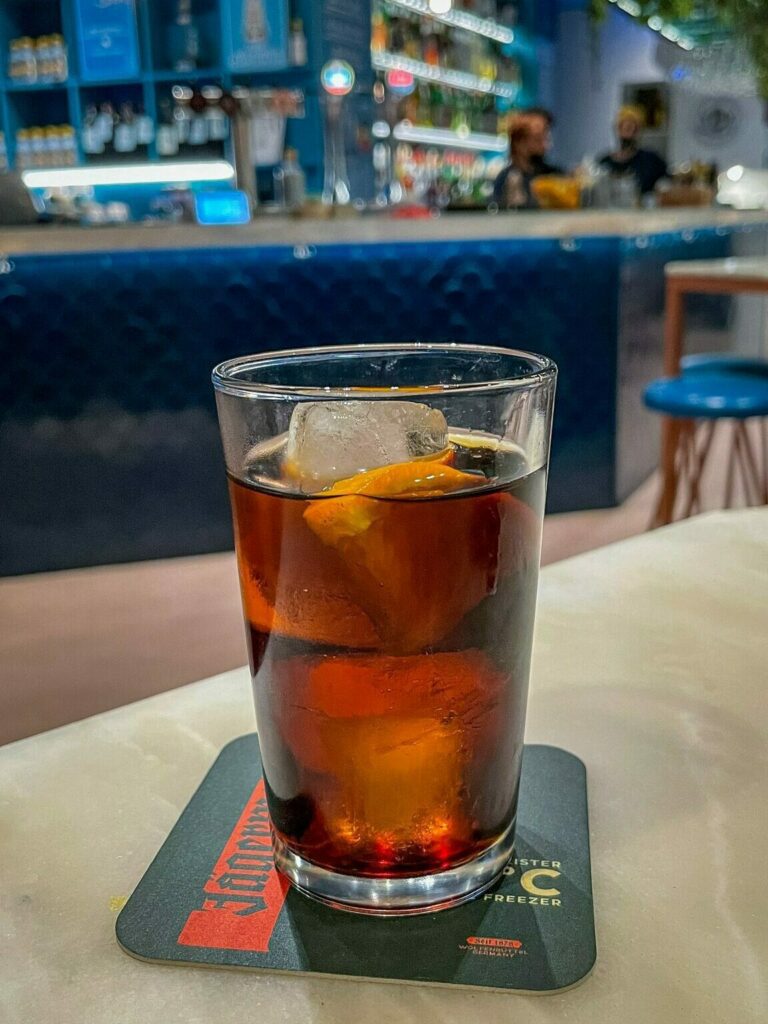
For what it’s worth, I (Matt here!) tagged along with some friends to experience tapas at Quimet & Quimet and La Perikete, and although I couldn’t eat (Celiac Disease).
My friends enjoyed the food and I think it’s a pretty essential experience to have (there are certainly other places to have that experience, too).
Learn to Make Paella (in a Stunning Garden Setting)
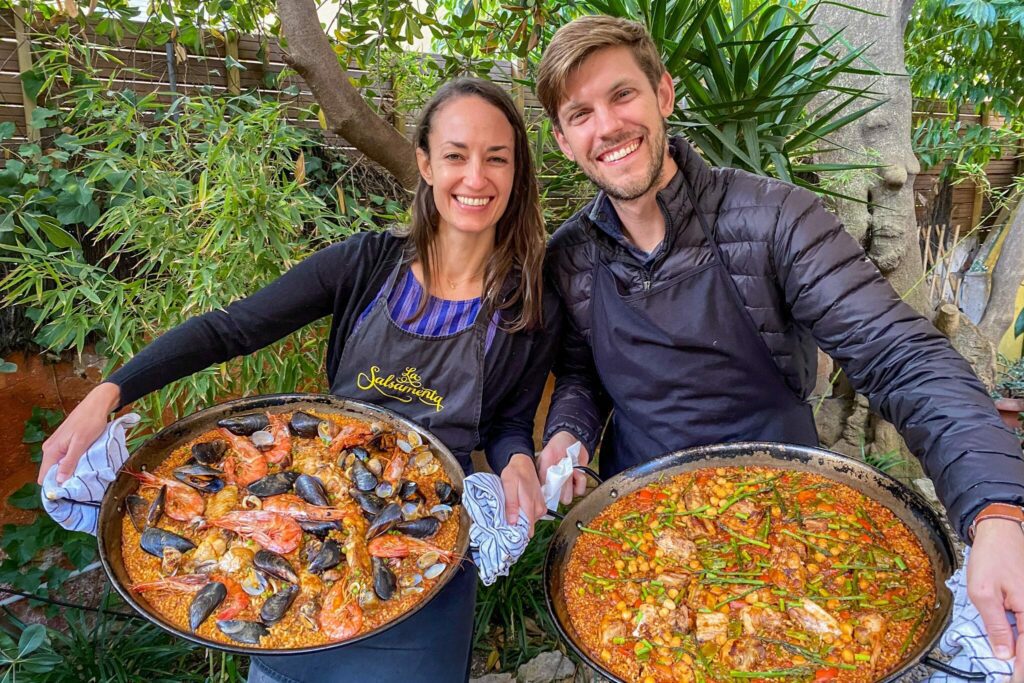
One of our favorite experiences on the Barcelona leg of our trip a few years ago was this paella cooking class we did with Clara, whose family owns a beautiful house with a serene backyard that serves as the setting for this class.
It’s worth noting that paella gets lumped in as “Spanish”, and it’s not really a Barcelona thing (it hails from nearby Valencia), but that’s okay.
Cooking classes are one of our favorite ways to experience a local food culture, because it puts you in extended contact with a local -usually a foodie or chef (or both) – where you can dive deep and learn.
They also happen to be a good way to deal with dietary restrictions (versus food tours, which are a little more difficult because it’s a bunch of different venues).
We got to make a couple of different paellas – one more traditional, one with a seafood focus – along with some sides to share together once everything was cooked.
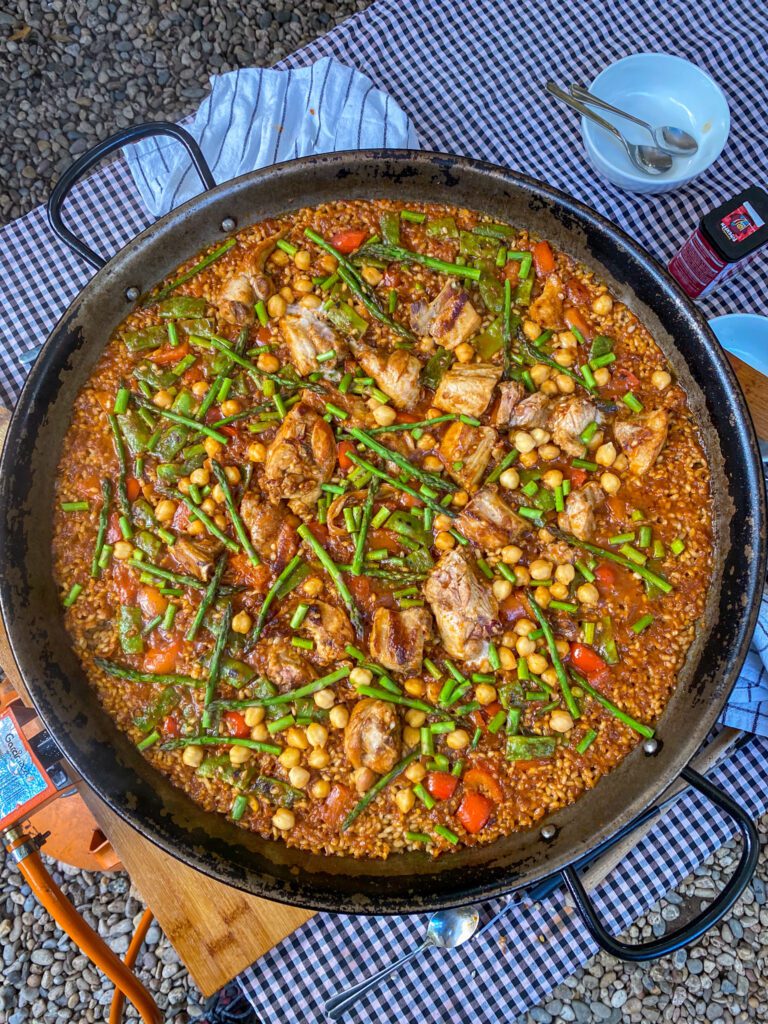
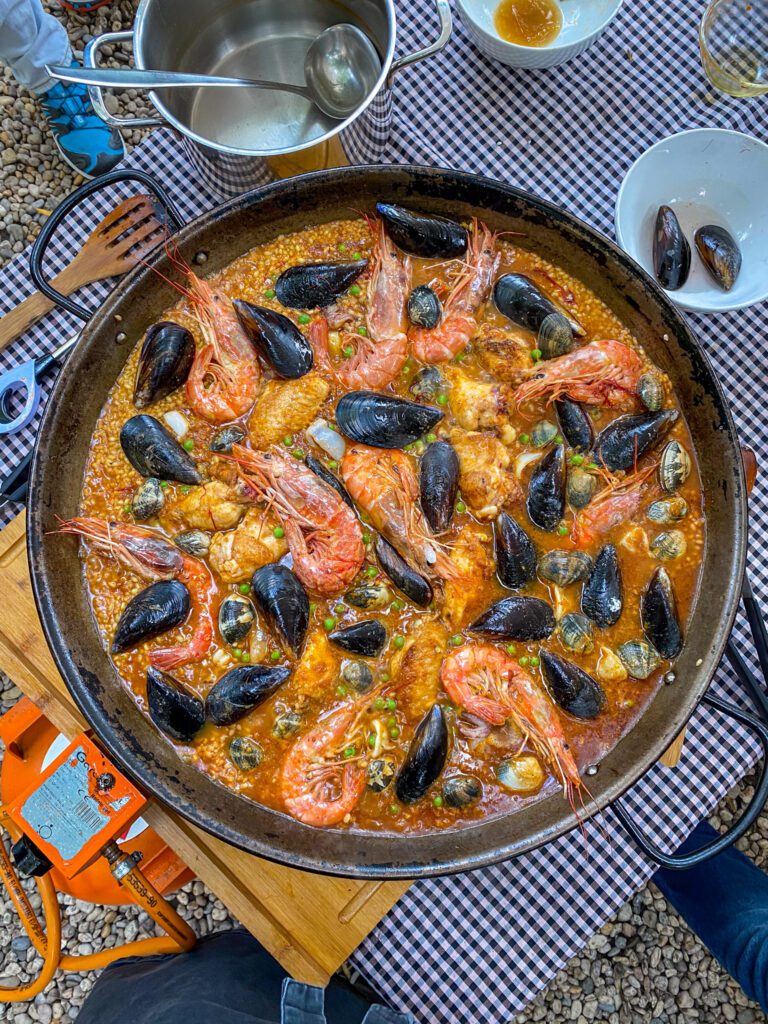
Take a Day Trip (Choose Your Own Adventure)
Similar to Madrid and Sevilla, taking a day trip from Barcelona is an excellent way to get out of the big city and see a different facet of Catalonia without having to pack up your stuff and move around again (which, frankly, sucks).
However, unlike those other two cities, there are a plethora of excellent day trips to choose from here, and which you choose largely depends on what you’re looking for.
We’re going to cover three that we think are a cut above the rest, two of which we’ve done ourselves.
Montserrat (for the Basilica + Hiking)
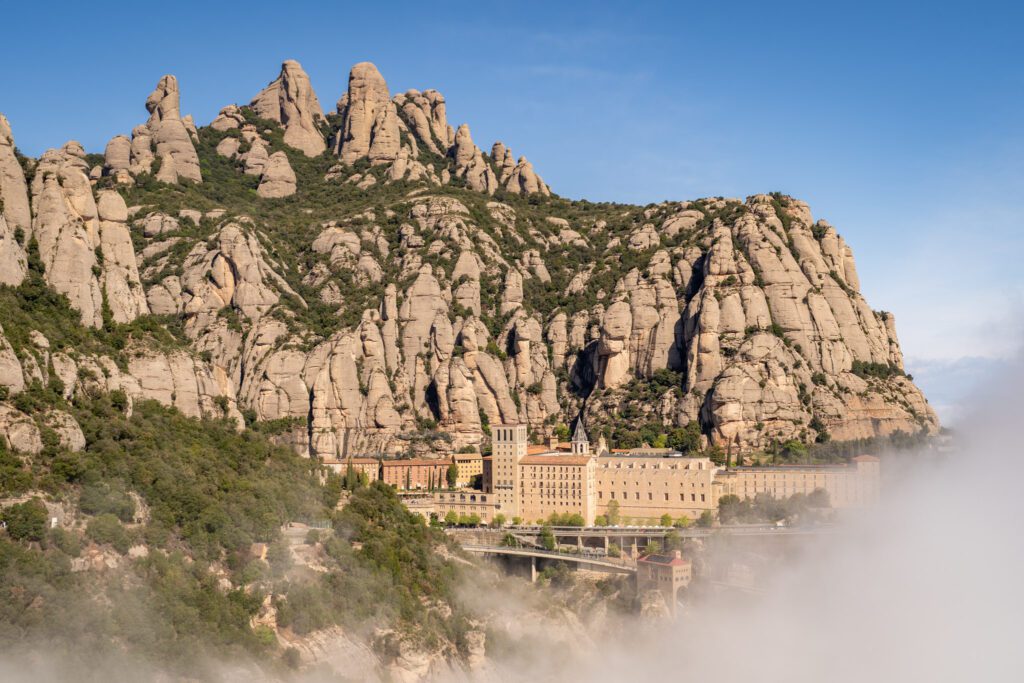
Montserrat is a holy site just outside of Barcelona that sits atop a rocky outcropping that absolutely does not look like it belongs in the same place as the surrounding landscapes.
It’s not surprising that someone hundreds of years ago said “yeah, this is a special place” and set up shop.
Since then, Montserrat has become a destination for pilgrims (kind of like the Camino de Santiago, but less famous).
Today, the two main attractions are the basilica atop the mountain – Basílica de Montserrat and the “Black Madonna” that sits atop the altar (the basilica’s holy relic), also known as “La Moreneta” – and the views from the hiking trails that leave from the abbey and basilica.
If you want to do both the basilica and head out on a short hike, you’re looking at a 5-6 hour trip, including transportation (depending on a lot of factors).
We’d STRONGLY recommend heading out on the first train of the day from Barcelona, because it does get very crowded here (especially on weekends, and particularly on Sundays).
I actually did this guided tour with a local company – which includes the transportation to Montserrat from Barcelona – for a couple of reasons.
One, I was traveling solo, and wanted to connect with other people. Two, I was deep into my trip and I didn’t want to deal with all the logistics of getting there, which is a little bit complicated.
I enjoyed the tour, and thought our guide Christian added a ton of context and information about the monastery and surrounding area.
The main downside of the tour is the flexibility to explore at your own pace. Want to see the Boy’s Choir, do the Museum, or go on a longer hike? You’re at the whims of your group.
Girona (for a Deeper Dive into Catalonia)
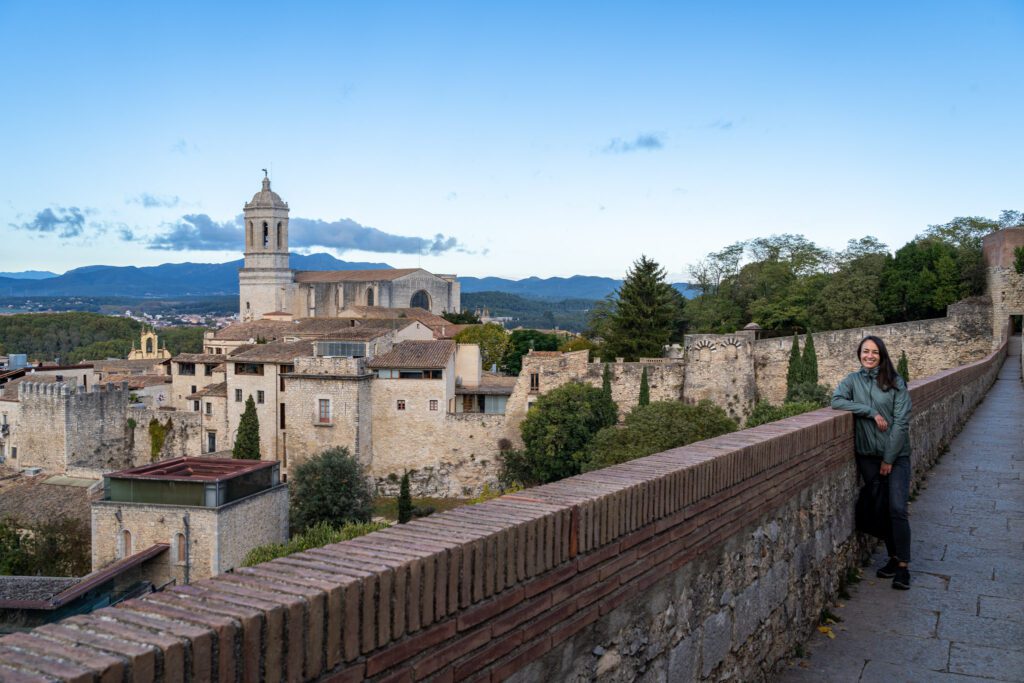
While Barcelona is a part of Catalonia (it’s the capital, in fact), you have to leave the big, cosmopolitan city to get a feel for what Catalonia is really like.
And, for that, we’d strongly recommend heading to Girona, where the main language you’ll hear is Catalan, and they have a rich history to explore.
If you’re looking to dive deeper into Catalonia, this is our recommendation. Plus, it’s a BEAUTIFUL city in its own right.
We did this excellent walking tour in Girona and cannot recommend it highly enough (it’s one of the best walking tours we’ve ever done).
It’s a walled city, and you should definitely get up on the city walls to get some nice views and see why they filmed big pieces of Game of Thrones here (specifically Season 6 – here’s a walking tour that covers the filming locations from the same company as the historical tour we did).
Costa Brava (For the Beach + Coastal Vibes)
The thing that’s missing from this itinerary is the beach, though we’re very much mountain people, so we weren’t particularly sad to choose Girona and Montserrat over the Costa del Sol.
However, if stepping foot on a Spanish beach (other than the lackluster ones in Barcelona) is a must-do for you, then we’d head out to the Costa Brava.
Unfortunately, it’s not super accessible without a car, so a guided tour is going to be your best option outside of renting one.
Lucky for you, the company that we did the Montserrat tour with has a Costa Brava tour that takes you from Barcelona out to the Costa Brava, and that’s the one we’d choose.
Where to Stay in Barcelona
Barcelona is a slightly bigger city than Madrid or Sevilla in terms of the amount of ground you’re going to be covering, so you’re going to want to choose a place that is somewhat central.
HOWEVER, we absolutely would not recommend staying in the Gothic Quarter (near La Rambla), which is tourist central.
Our top recommendation is to find a charming hotel or guesthouse in Gràcia, which is far and away our favorite part of Barcelona.
Cobblestone streets, energetic plazas, and some of the best bars and restaurants in the city? Sign us up.
If you want a nice, affordable guesthouse in a nice location, stay at Casa Mathilda (another option would be Casa del Sol, which is run by Sonder who we’ve stayed with in multiple cities around the world).
If you want to stay in an apartment for a little more space, look at Be Mate Paseo de Gràcia.
If you’re really on a budget, either look at Casa Jam (a boutique hostel with private rooms and nice facilities – we were going to stay here a few years ago but chose elsewhere) or Hotel Ronda Lesseps (it’s a little further north, so you’re trading location for affordability).
If it’s your first time in Barcelona, you can’t go wrong with staying centrally in l’Eixample.
It’s right in the center of the city, connecting the historic center with the outer ring of more residential neighborhoods.
It’s conveniently located between the Old City and Gràcia, and it’s well connected to just about every place you’ll want to visit over the course of your Barcelona itinerary.
This part of the city is full of great hotels – we’ve stayed at and would recommend Casa Bonay (a beautiful boutique hotel) and Praktik Essens (a nice mid-range option).
While this is probably the most upscale neighborhood in central Barcelona, there are a couple of relatively affordable options like Limonaia and Mosaic by Ona.
Once again, we have an entire guide dedicated to finding the perfect place to stay in Barcelona. Read that for far more detail than we’re including in this section.
What to Do with More Time in Spain
Here are a few things we’d add if you’re lucky enough to have more time in Spain, in the order in which we’d add them.
For more, make sure to head over and read our guide to spending two weeks in Spain, which will give you an idea on how to organize a longer trip.
Granada (+2 Days)
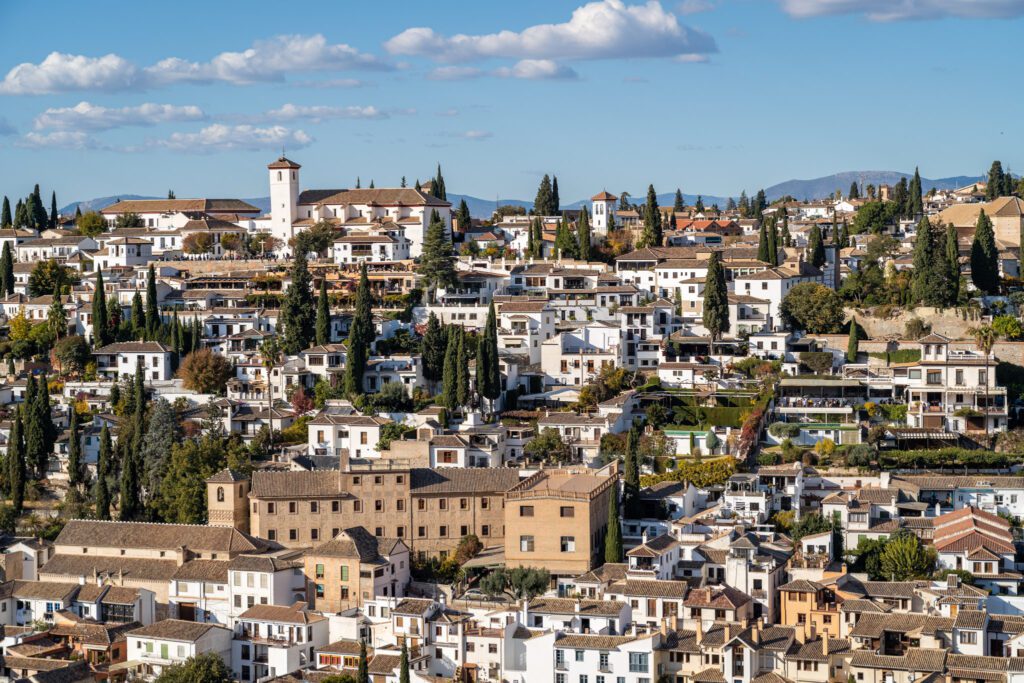
As we mentioned in the introductory logistics sections, Granada is absolutely the first place we’d add to the itinerary if you have a few extra days to play with.
We love Granada, and every time we talk about “where should we go this year?”, southern Spain is somewhere on the list.
While the itinerary above does a decent job introducing you to the influence that the ~800 year Caliphate had on Spain – southern Spain in particular – it is perhaps most evident in Granada.
From the narrow alleyways and whitewashed buildings of the Albaicín sprawling down the hill to the architectural masterpiece that is the Alhambra, Granada is, at least for us, the epicenter of that influence.
Which makes sense, because it was the last remaining stronghold of the Caliphate before they surrendered to the Spanish King & Queen (Isabel and Ferdinand, who are buried at the cathedral in Granada).
The Alhambra – the huge, beautiful palace that sits atop the hill in Granada – is one of the most visited tourist attractions in Spain, and it’s pretty easy to understand why once you’re inside.
The intricate architecture and lush gardens are magnificent, and are well worth seeing (we did this guided tour in an effort to gain a deeper understanding of the cultural and historical undertones in Granada and loved it).
The other thing not to miss is a walk through the Albaicín at sunset (here’s a guided walking tour with the same local company as the Alhambra tour).
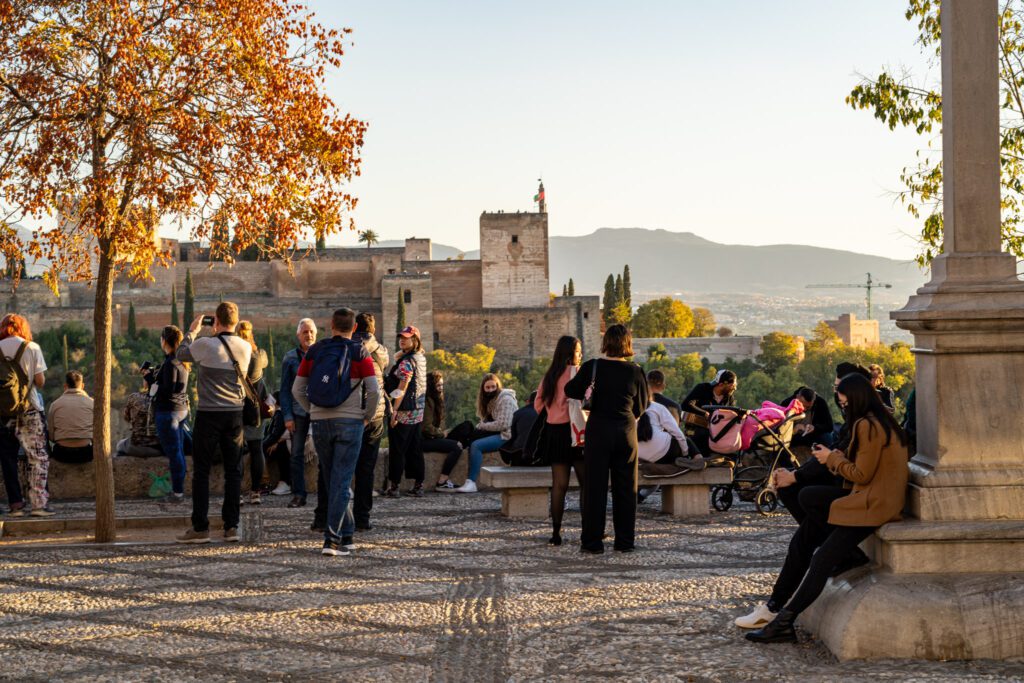
Granada was the last Muslim stronghold on the Iberian Peninsula, falling in 1492 to the Christian monarchs after many centuries as part of a Muslim caliphate.
The impact of those centuries of a strong Muslim community are immediately evident as you walk the streets of Granada, particularly in the Albaicín, the Muslim Quarter.
From mosques that have been turned into churches but still retain some unique architectural elements, to countless tea houses (Alysha’s favorite!), Granada is a city worth exploring beyond just the Alhambra to understand how the different cultures have mixed over the centuries.
For more information on Granada, make sure to check out our guide to 2 days in Granada, which has everything you need to know to spend a couple of days in the city, including how to see the Alhambra.
Another Day Trip from Barcelona (+1 Day)
There are several great day trip options from Barcelona, and adding another one to the day trip in the itinerary above is a great way to get out and see more of Catalonia without having to pack up your stuff and move around.
Ronda (+2 Days)
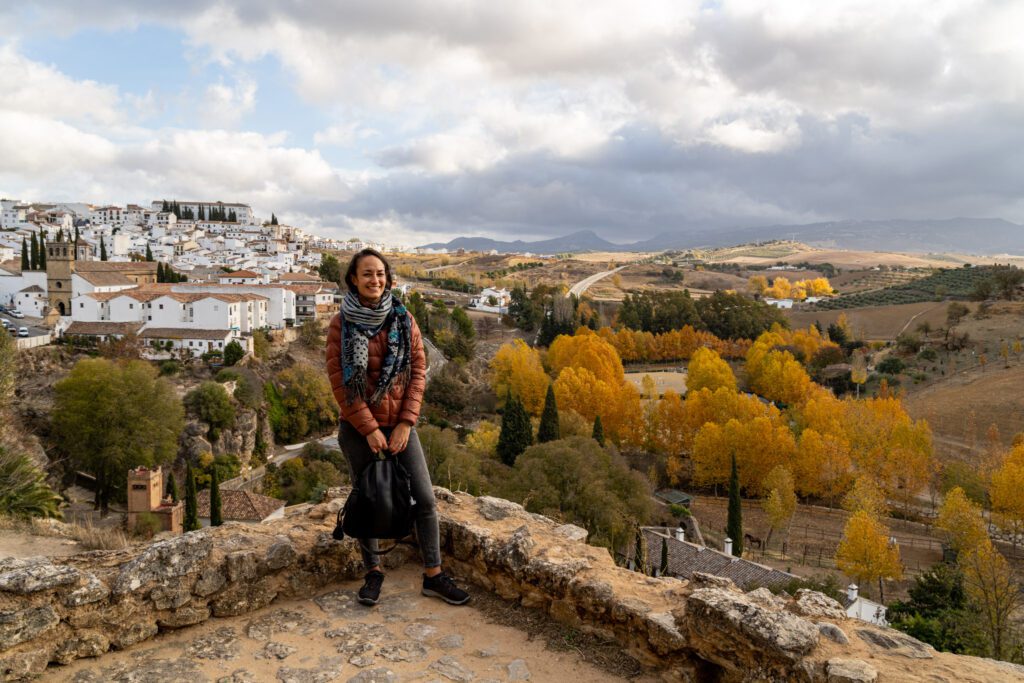
Tucked away up in the mountains above Málaga in southwestern Spain, Ronda is a charming little town that we spent a few days exploring.
It’s full of the whitewashed buildings and dramatic cliffs that make this part of the world special.
It’s a relatively small town (that is somewhat difficult to access), and it doesn’t have the big tourist attractions that, say, Granada or Sevilla have, but it’s a lovely place to spend a few days eating, drinking, and relaxing, and offers something a little different than those bigger cities.
Here are some photos (I truly forgot just how beautiful Ronda is until I was sorting through our photos to put this guide together – stunning!).
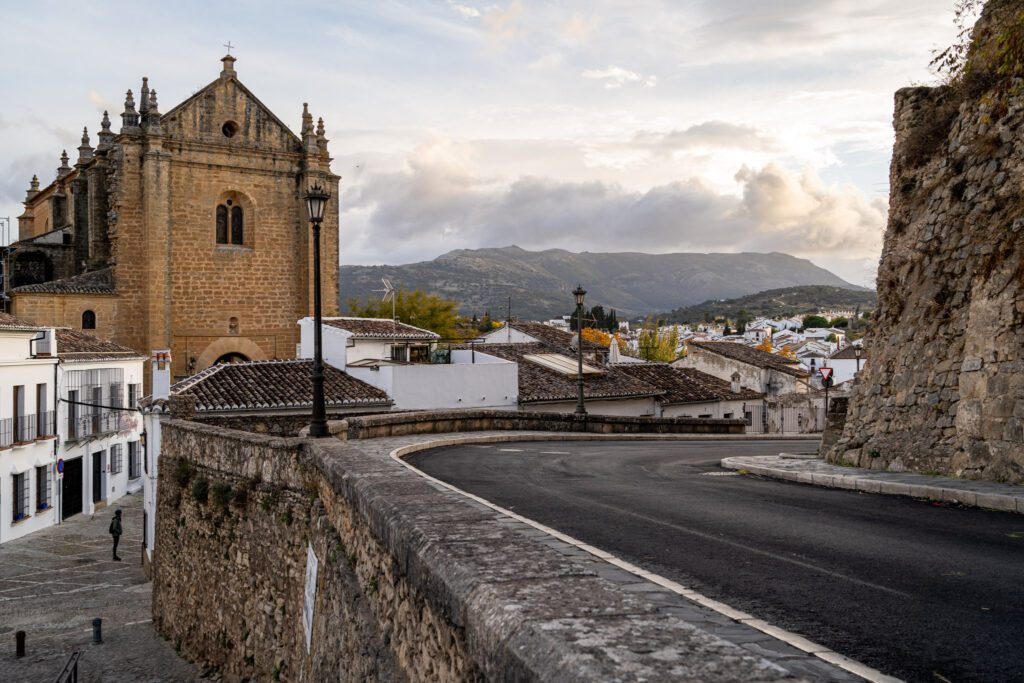
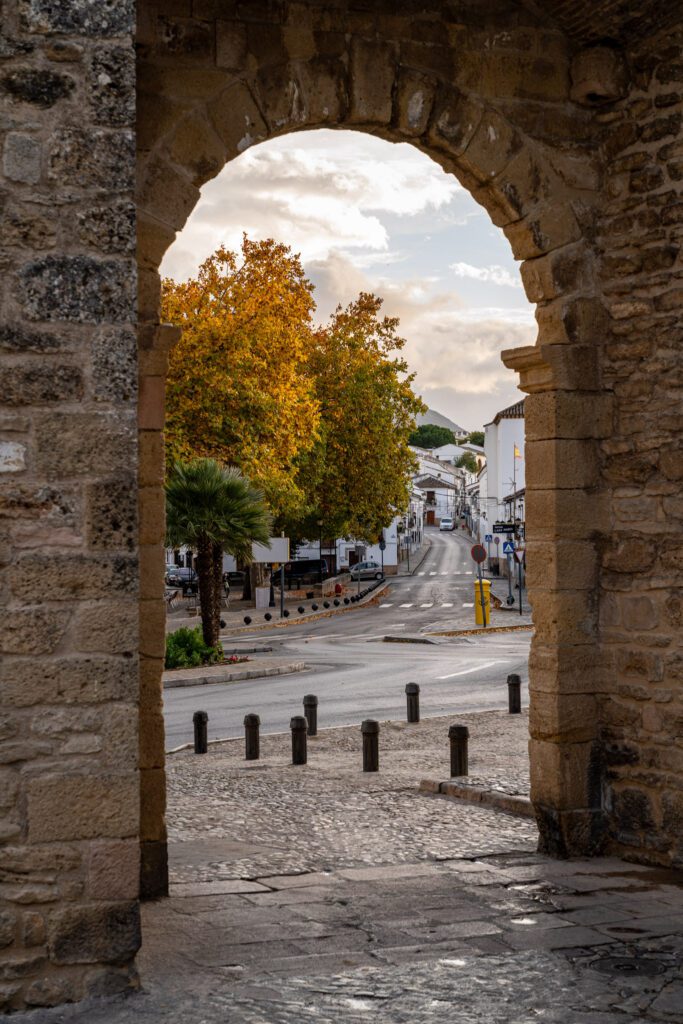
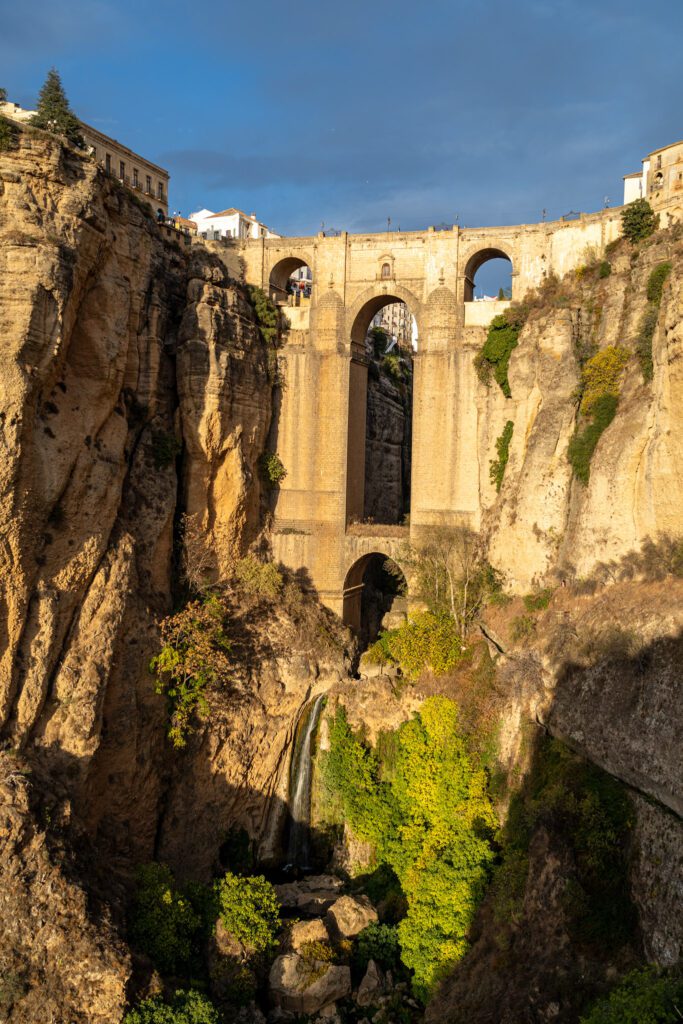
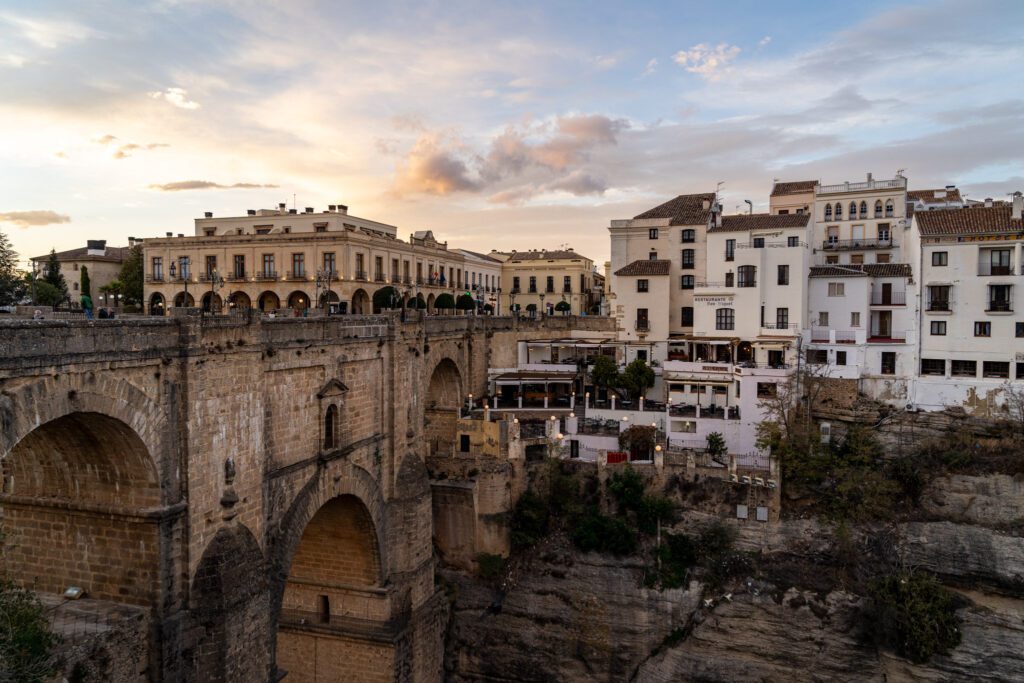
Given the effort to get to Ronda, it probably doesn’t make sense to add it unless you have two nights to dedicate to it.
There are some nice hikes and walks around town, and if you’re into bullfighting (or at least the history surrounding it), Ronda has one of the more famous bullfighting rings in Spain.
What to Do with Less Time in Spain
With anything between 7 and 10 days to spend in Spain, we’d STRONGLY recommend cutting either Sevilla or Barcelona.
10 days is barely enough time to cover all that ground, and with eight or nine days, it’s going to feel like a breakneck pace.
We think you’re better off spending more time in fewer places than racing around trying to fit it all in (though we completely understand the inclination, because we’ve absolutely been there and done that – learn from our mistakes!).
You can head over to our guide to spending one week in Spain for more of our logic on why you have to make that hard choice, and which one we’d lean towards.
Another option would be to stick to one city for your entire trip – Barcelona or Madrid would be best for this – and go deeper into the region with day trips to various cities nearby.
This is probably best for any trip that is five days or less.
From Madrid, you’ve got Toledo, Segovia, and Salamanca. From Barcelona, you could do Montserrat, Girona, Tarragona, and Valencia.
Planning a trip to Spain? We’d love to help!
Here are our other Spain travel guides to help you plan an incredible trip (even if you have to eat gluten free!).
If there’s no link below, it means we’re still working on it – long, in-depth guides take time! We’re working on it, though, we promise.
The first place to start, if you haven’t already found them, is with our detailed itineraries. We have one shorter version for 7 days in Spain, one version that covers 10 days in Spain (a good middle ground, we think), and one longer version for two weeks in Spain (with ideas for more and less time in both guides).
Our Barcelona Guides
- What to do in Barcelona (as a First Timer)
- How to Plan an Amazing 4 Day Barcelona Itinerary
- Where to Stay in Barcelona: A Complete Guide for First Timers
- 12 Things to Know Before You Visit Barcelona
- Gluten Free Barcelona: A Complete Guide to GF Restaurants + Bakeries
- Where to Find the Best Specialty Coffee in Barcelona
- How to Plan an Incredible Day Trip to Montserrat (from Barcelona)
Our Madrid Guides
- What to do in Madrid (as a First Timer)
- How to Plan an Amazing Madrid Itinerary (2 Days)
- Where to Stay in Madrid: A Complete Guide for First Timers
- 12 Things to Know Before You Visit Madrid
- Gluten Free Madrid: A Complete Guide to GF Restaurants + Bakeries
- Where to Find the Best Specialty Coffee in Madrid (for Coffee Nerds)
- How to Plan an Amazing Day Trip to Toledo (from Madrid)
The Rest of Spain
